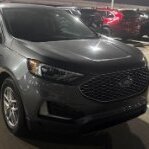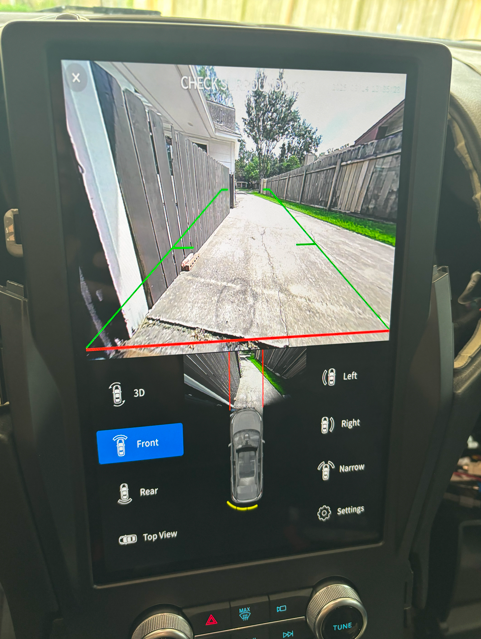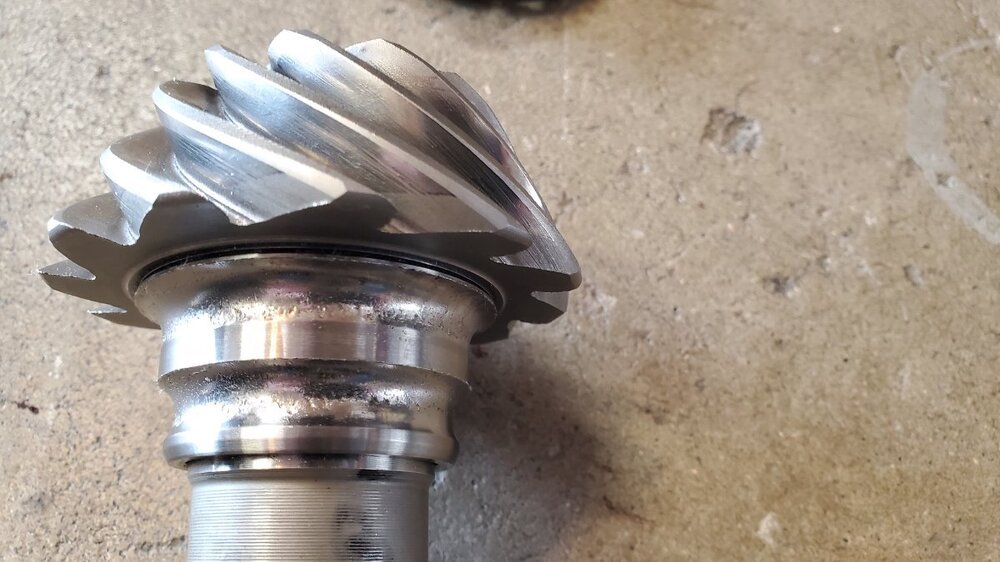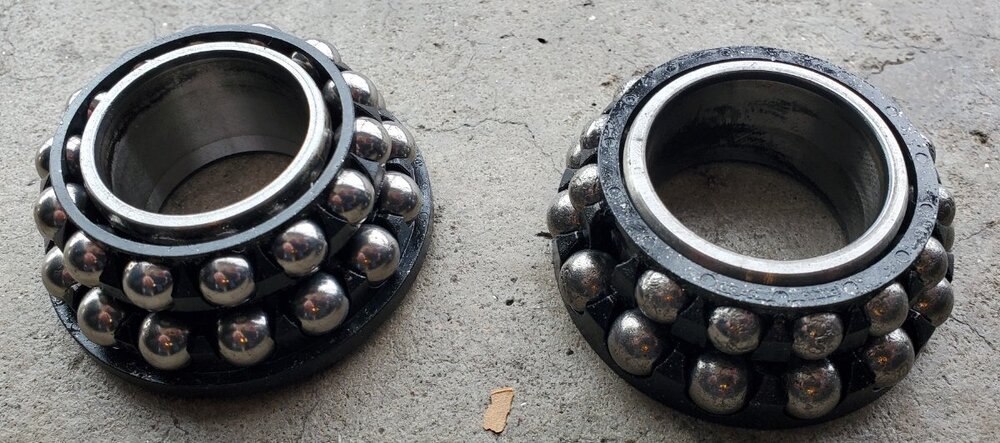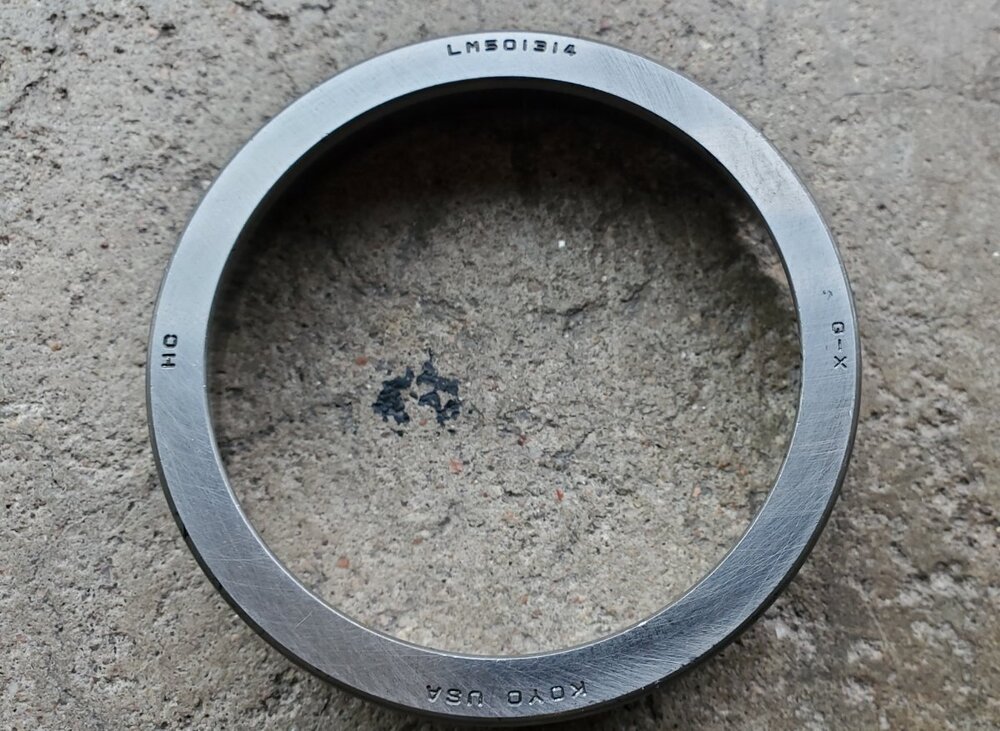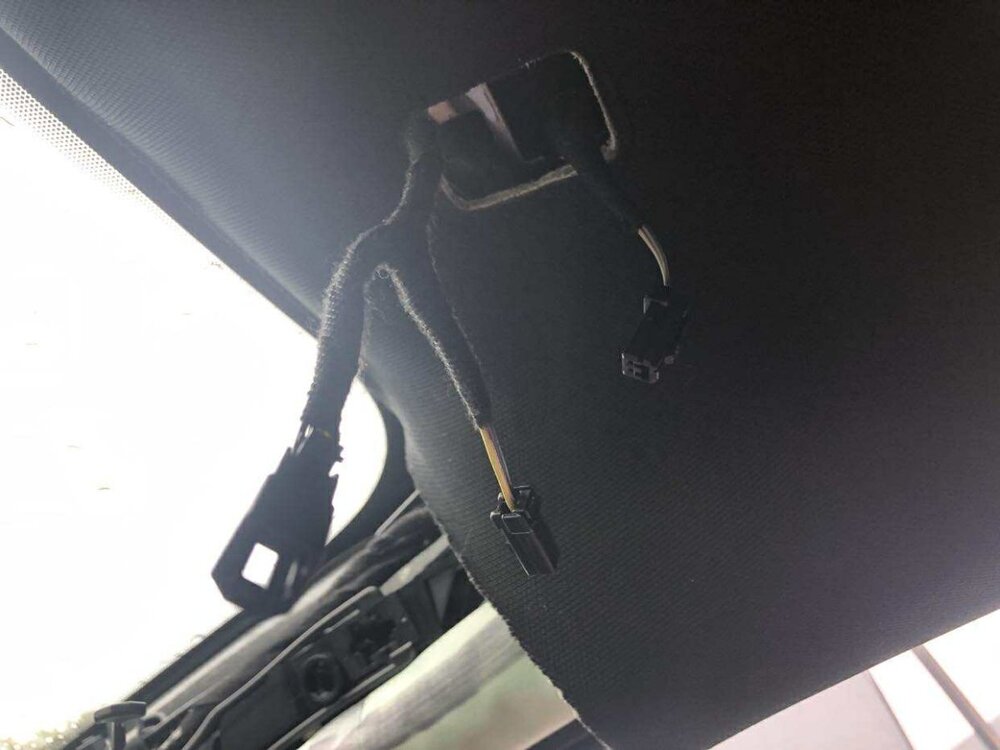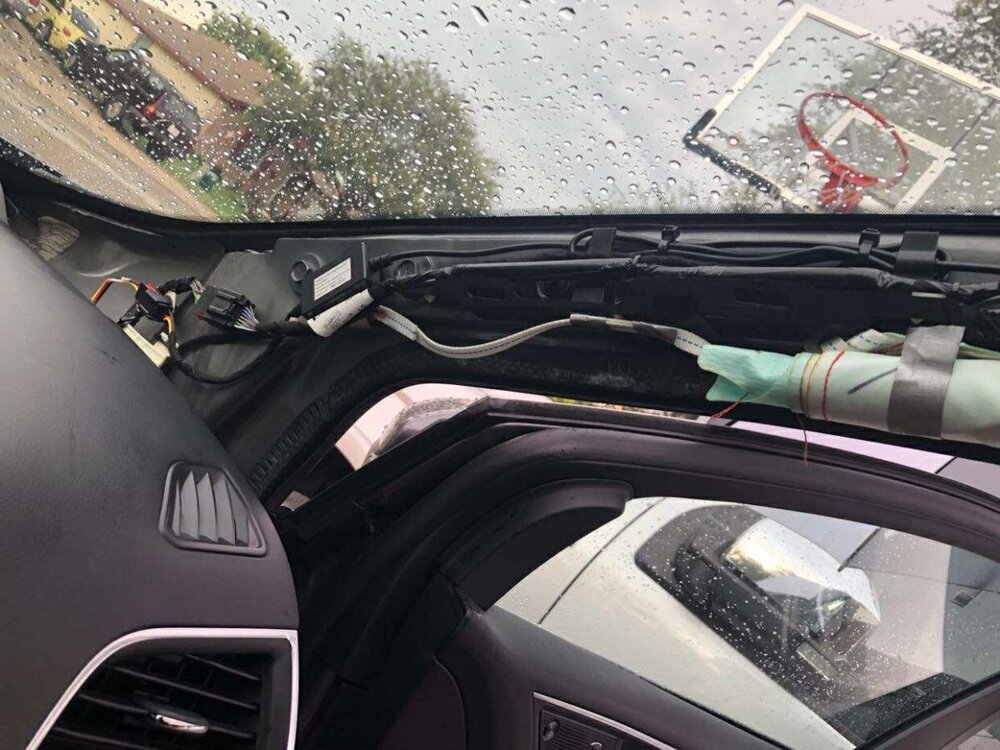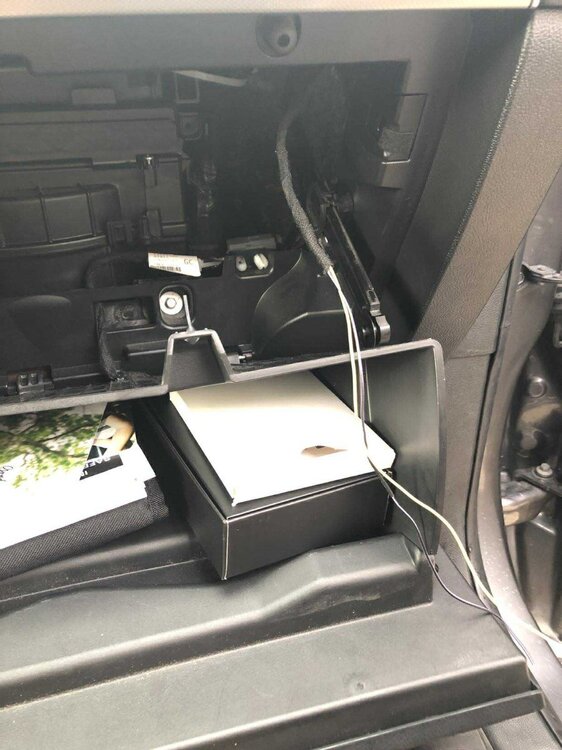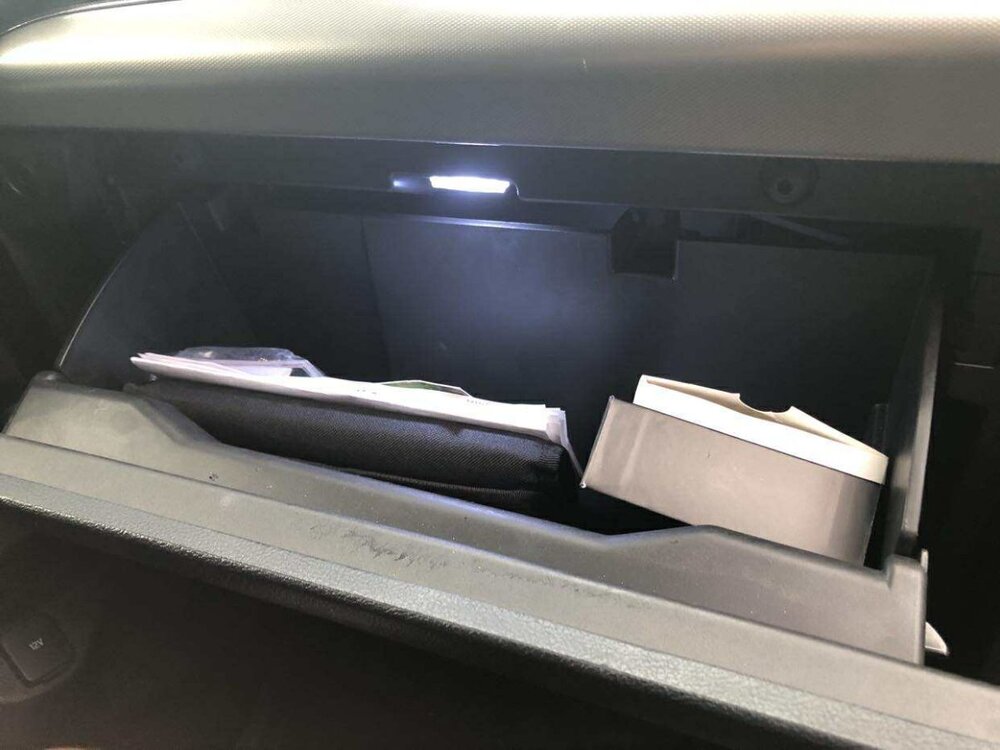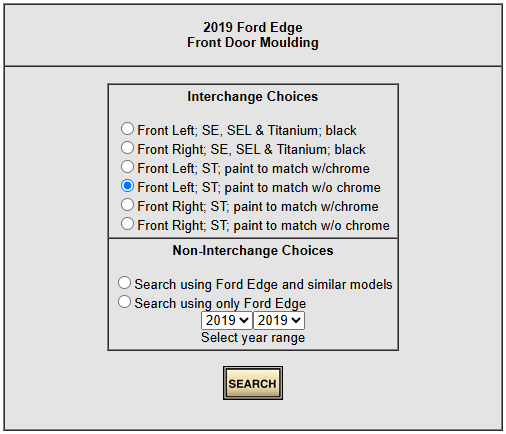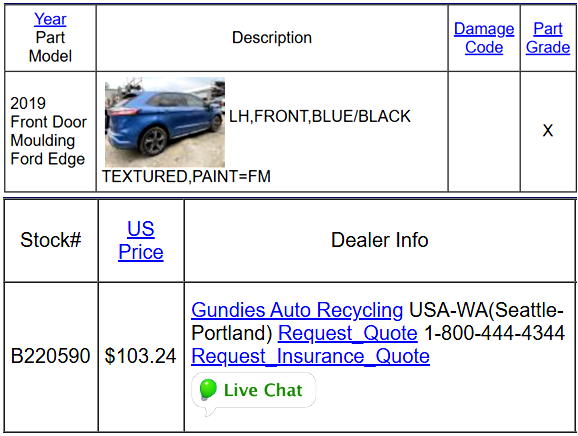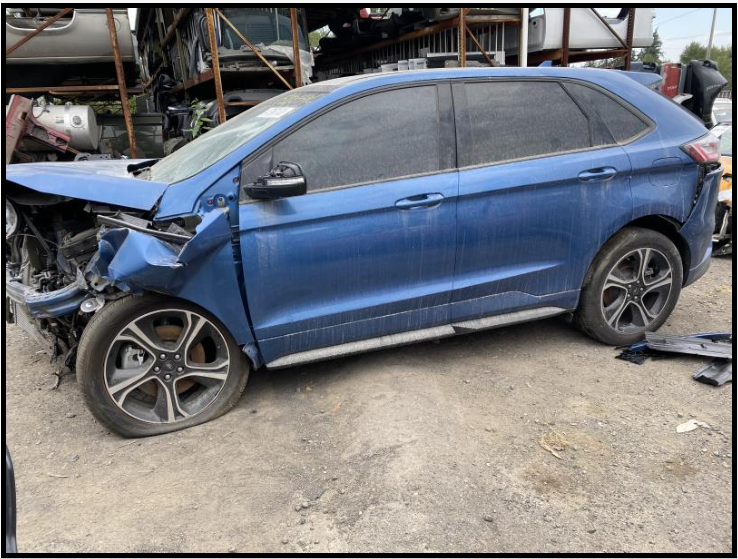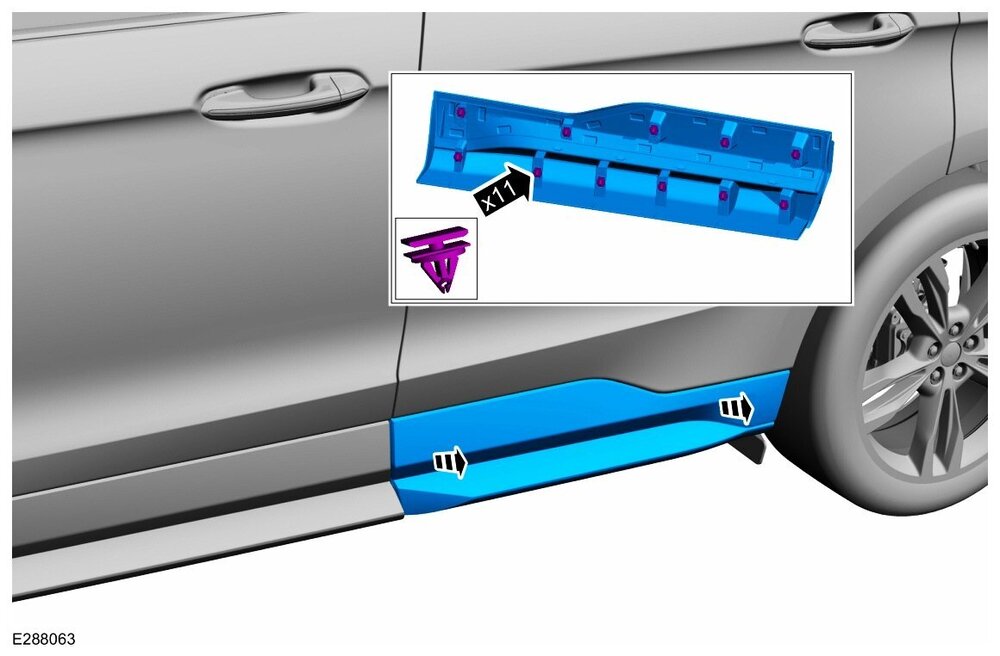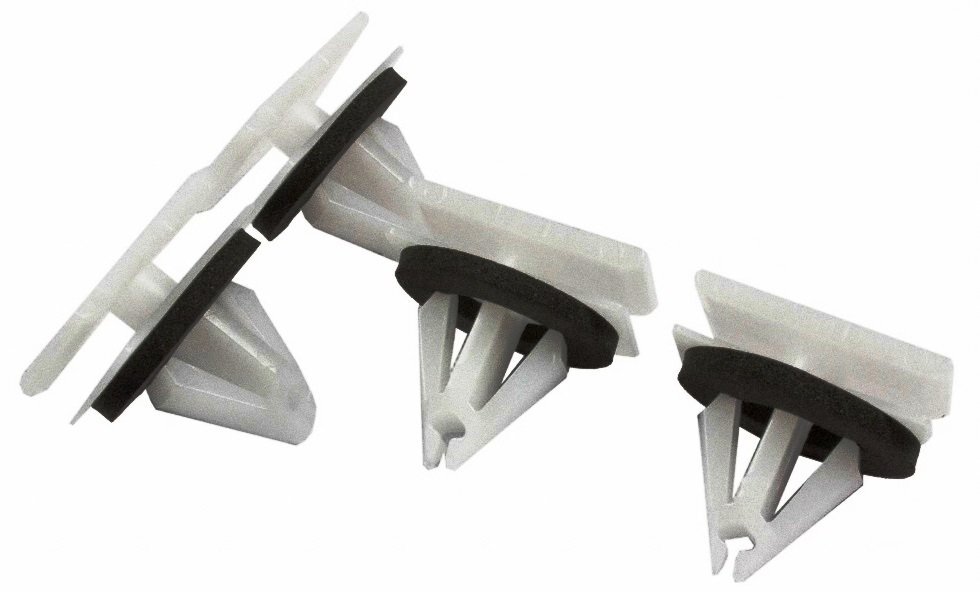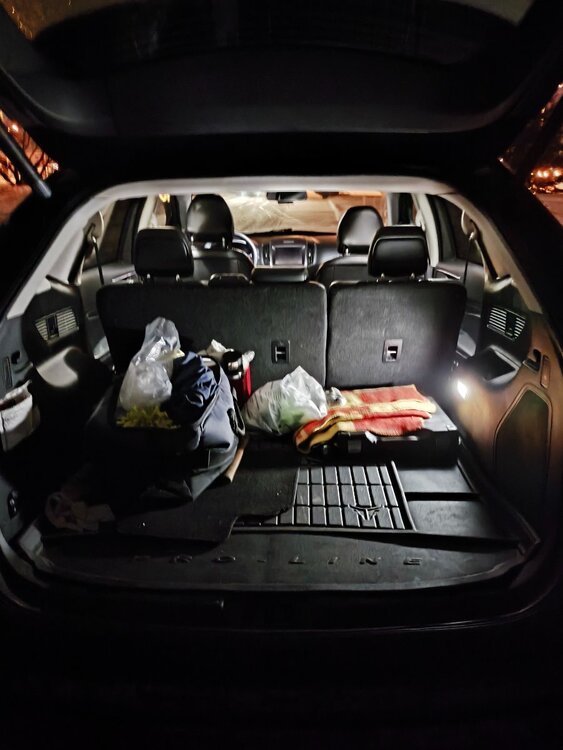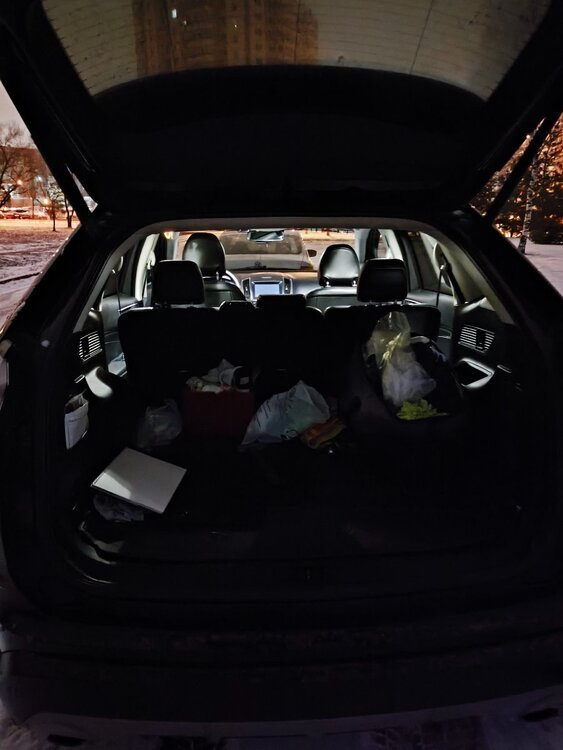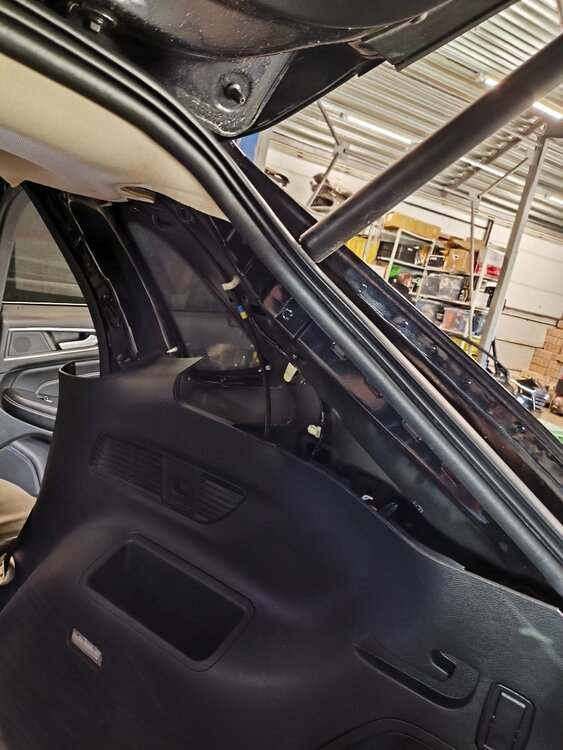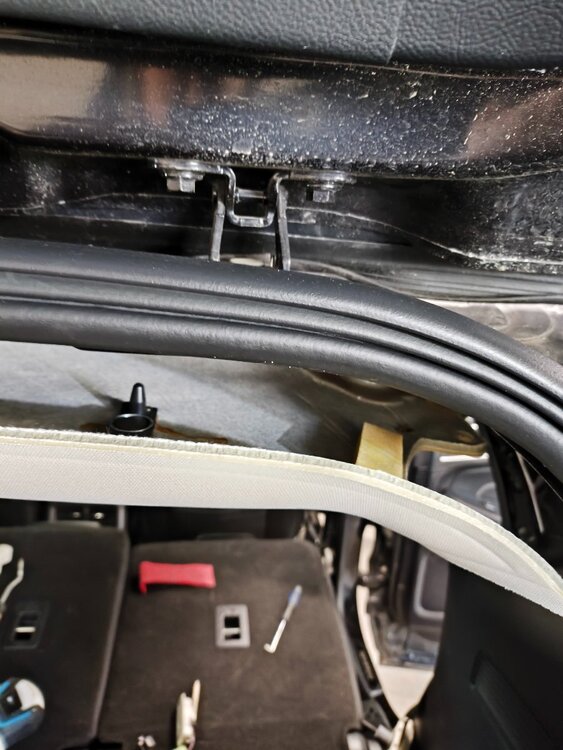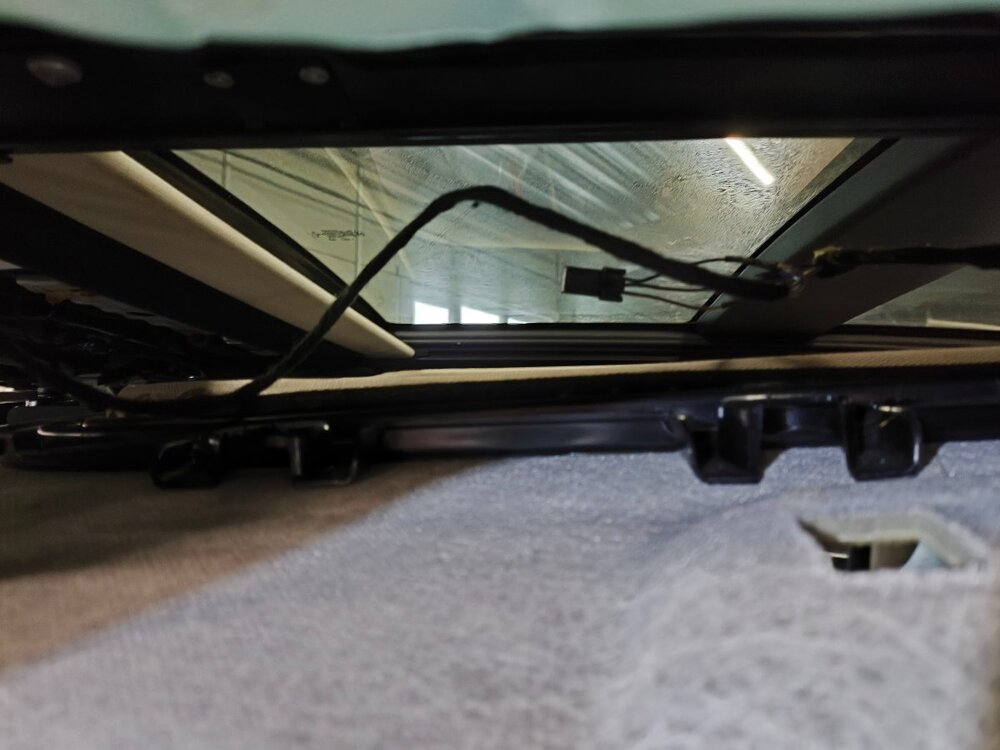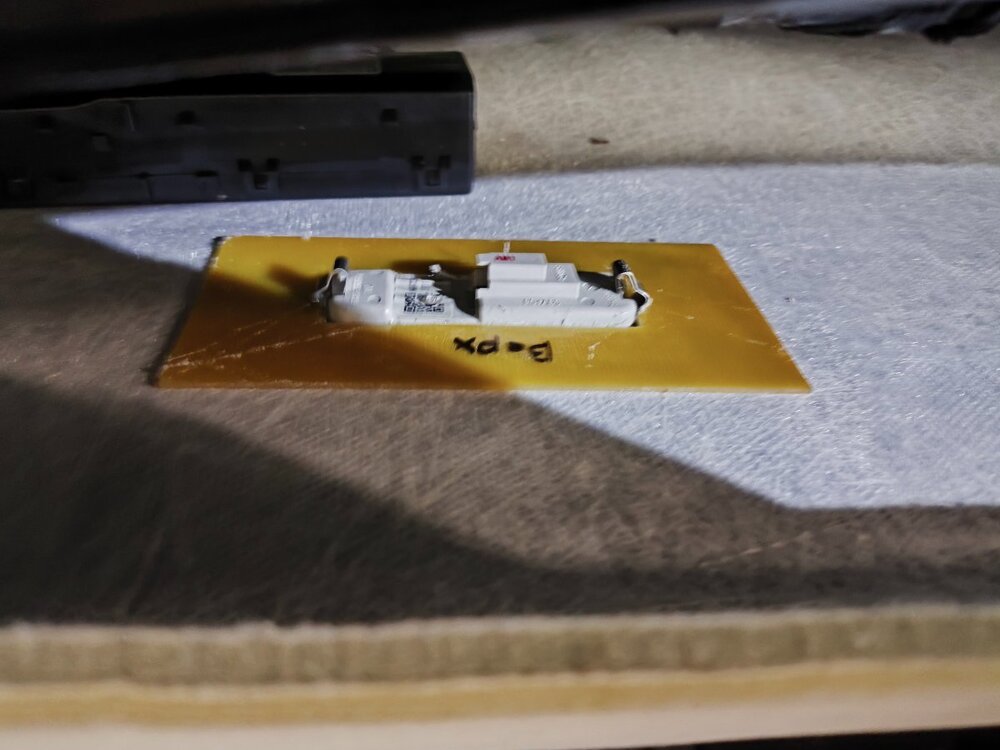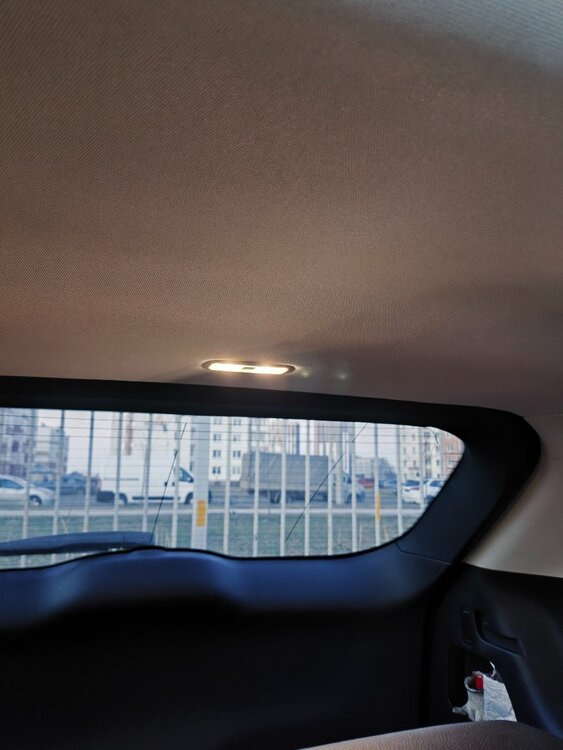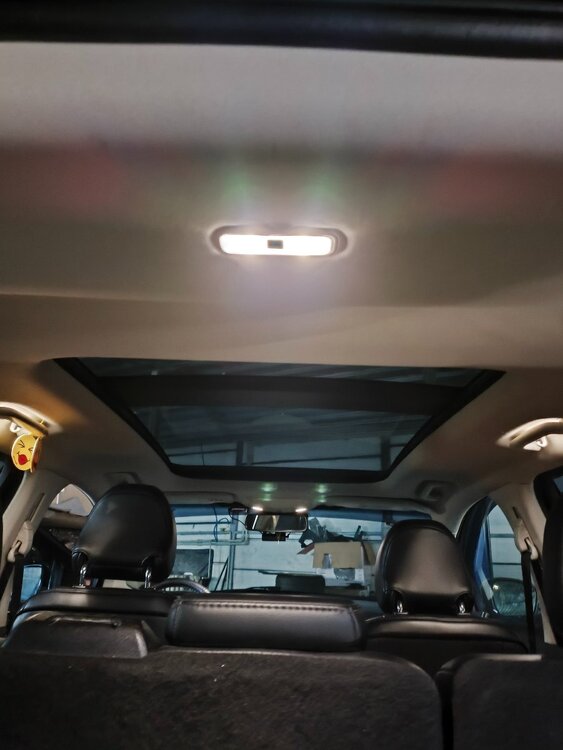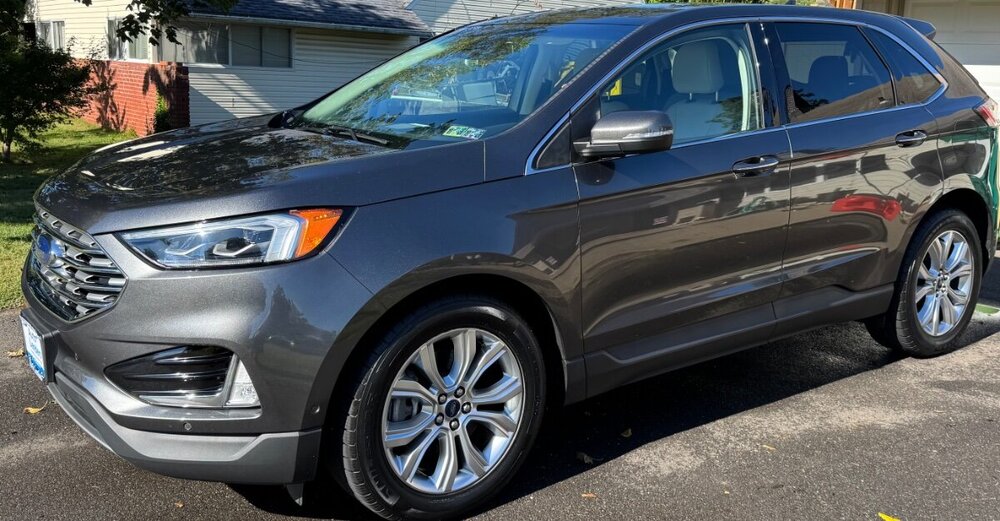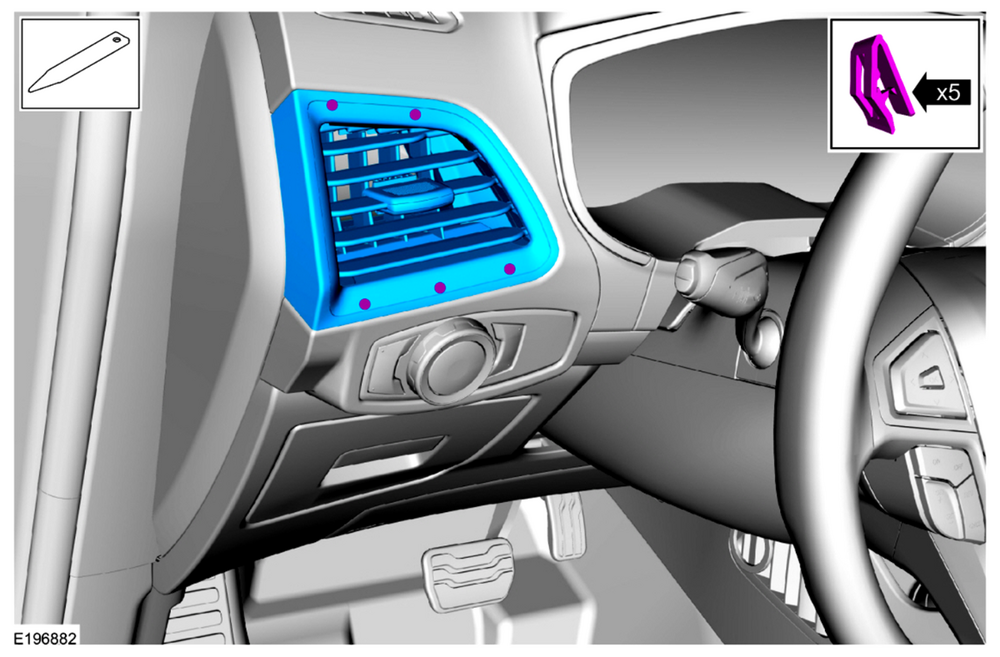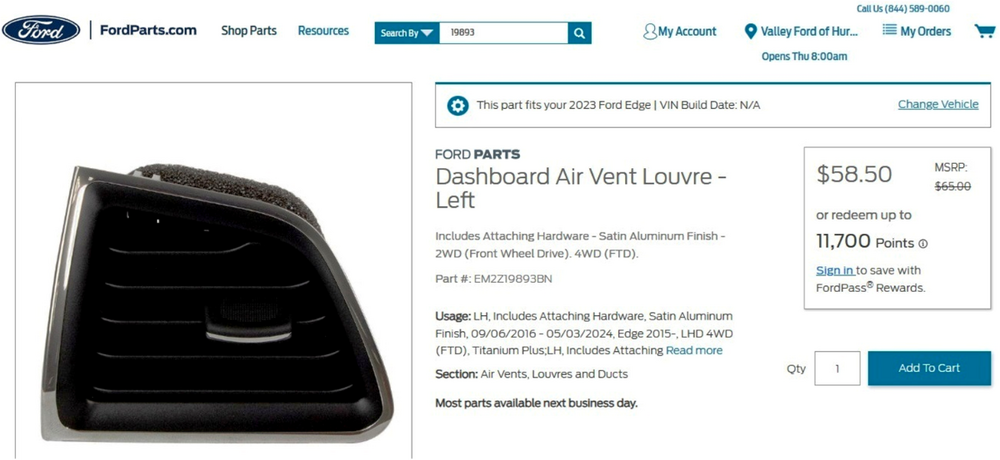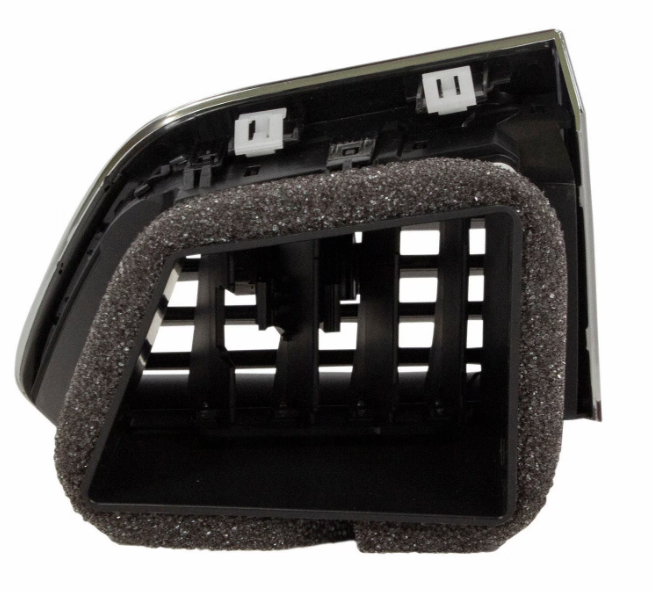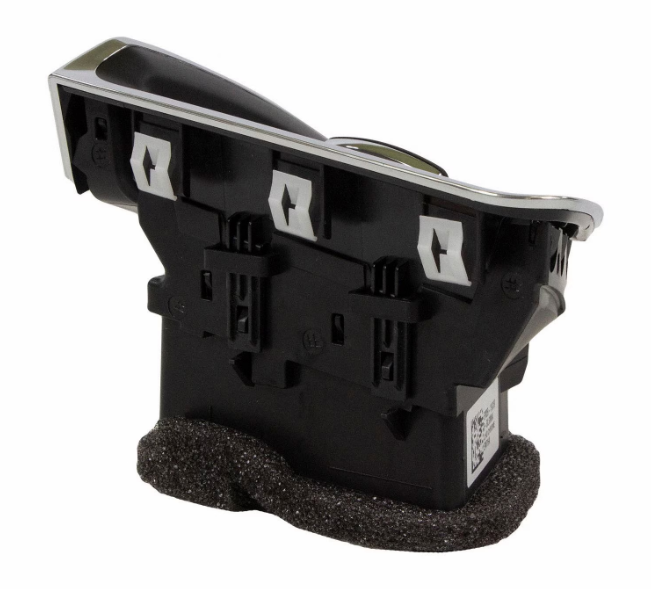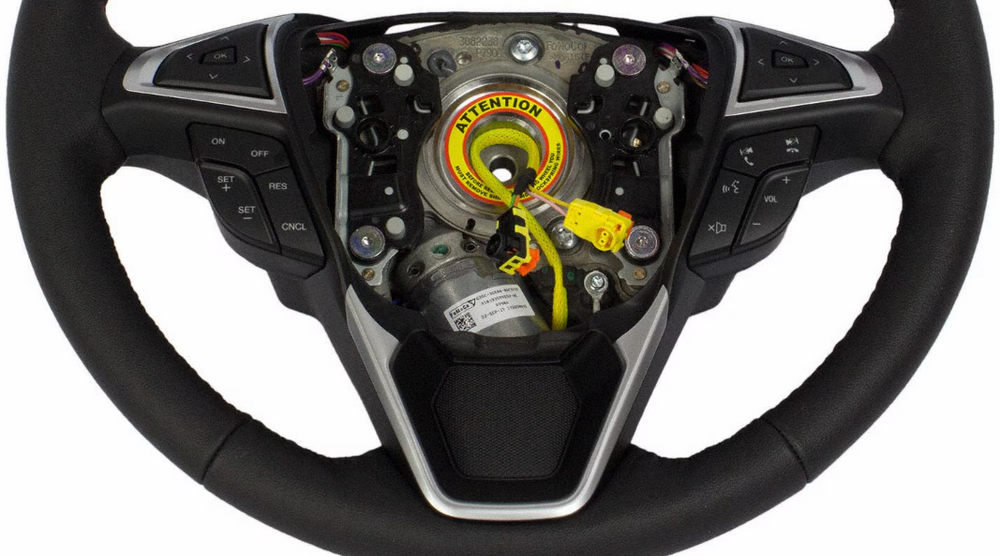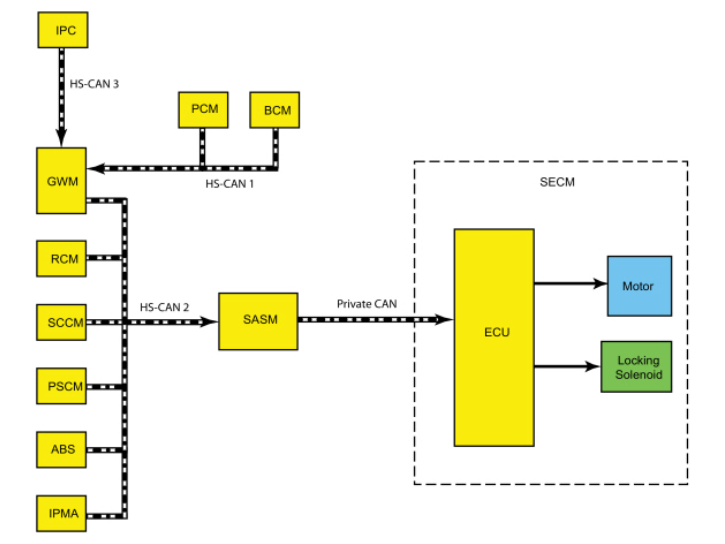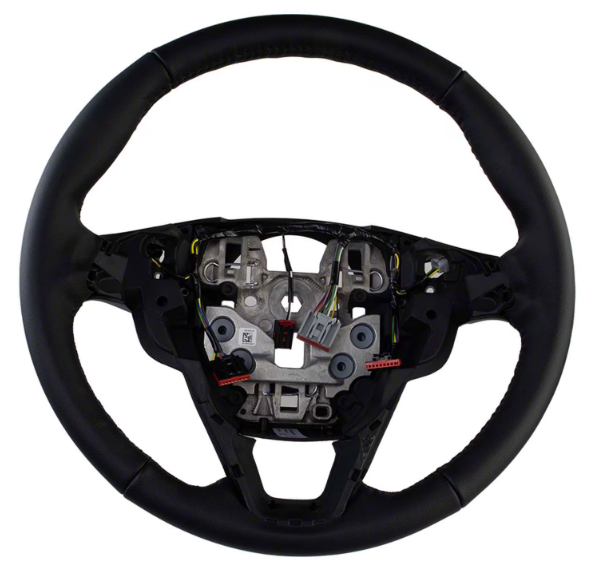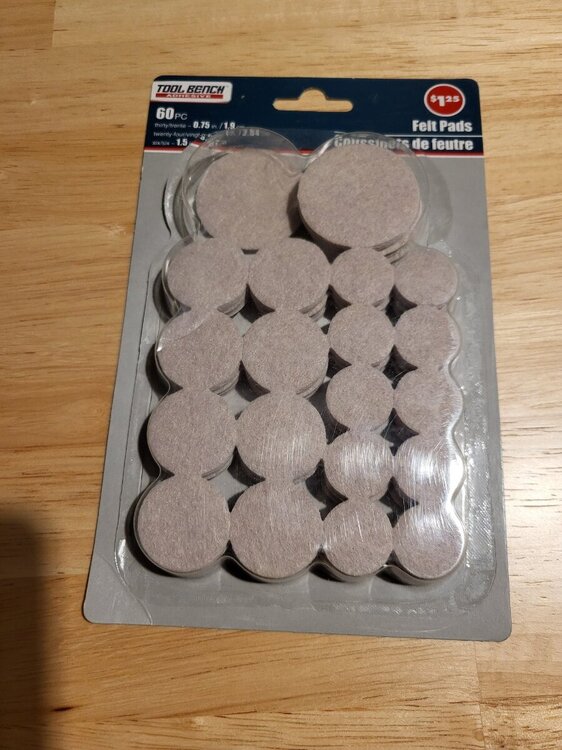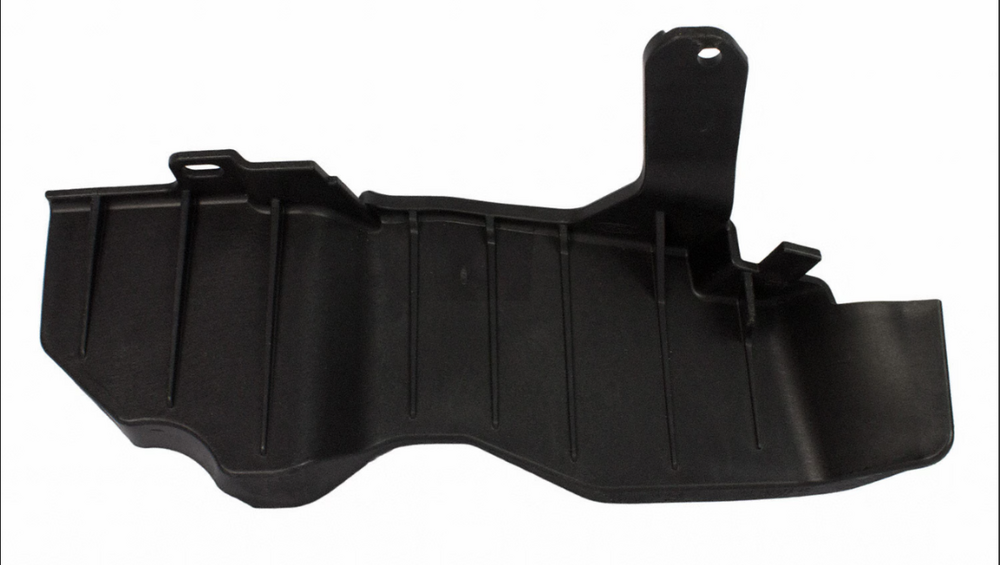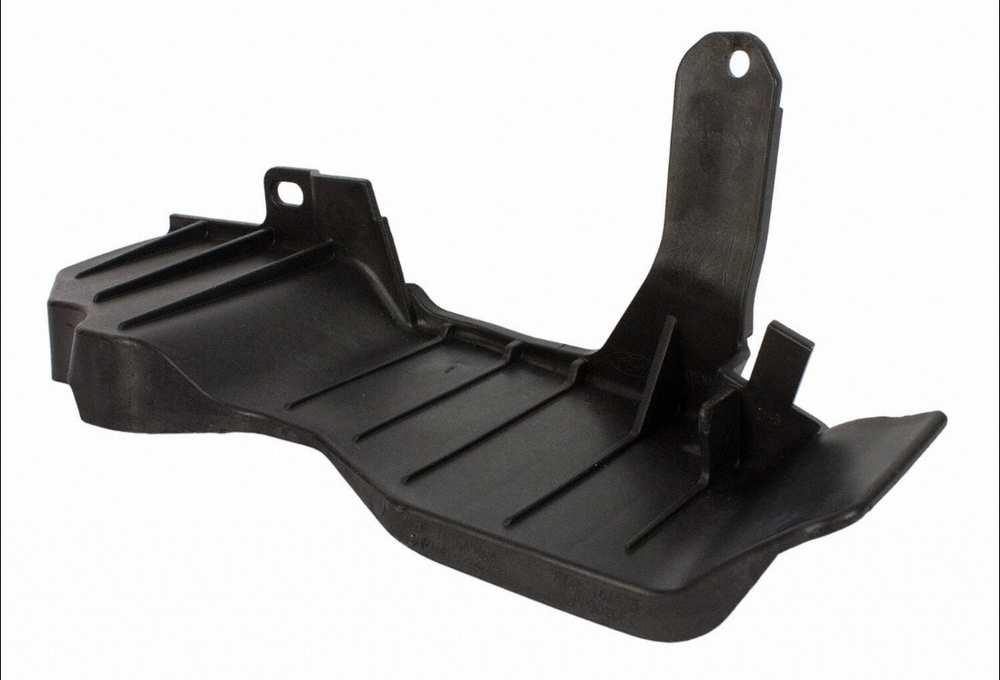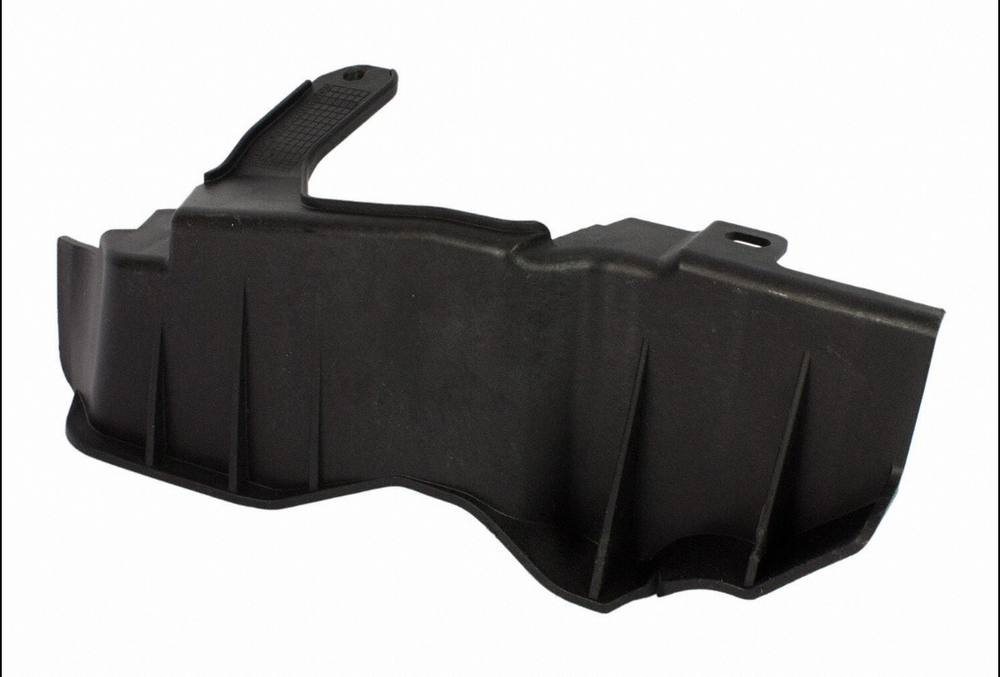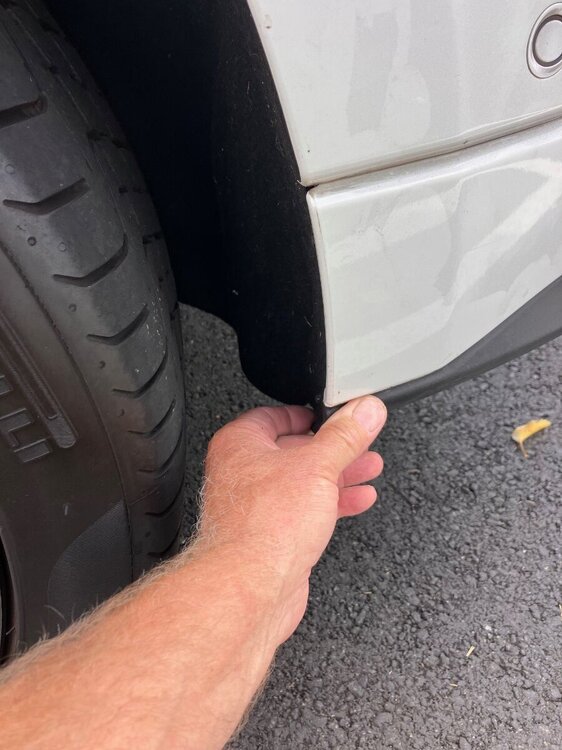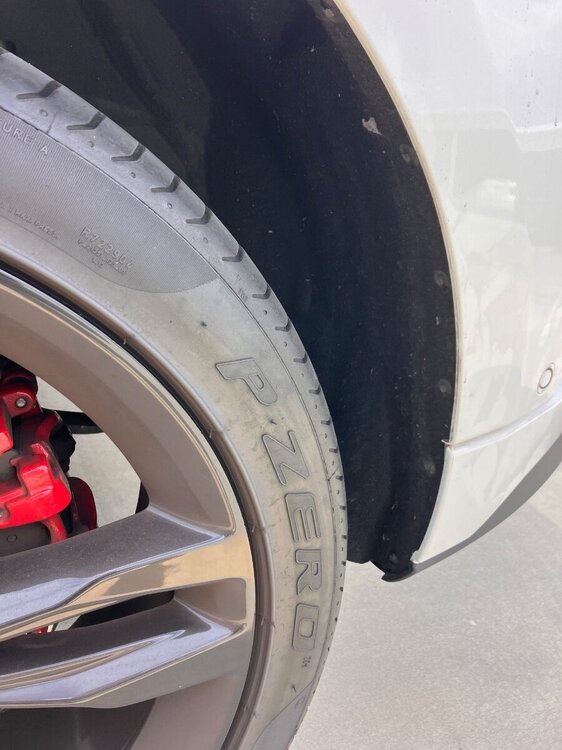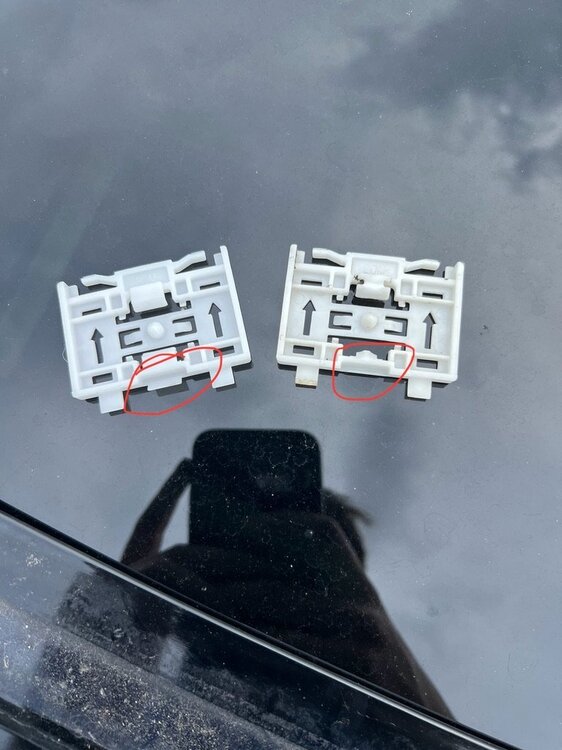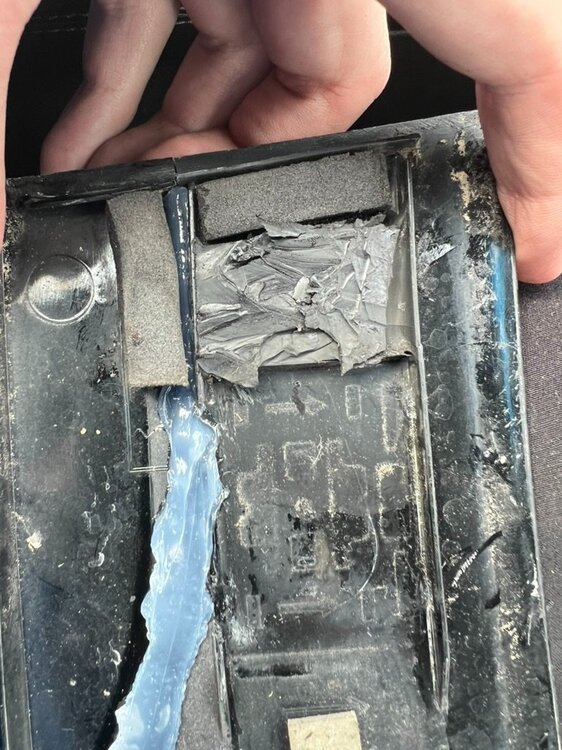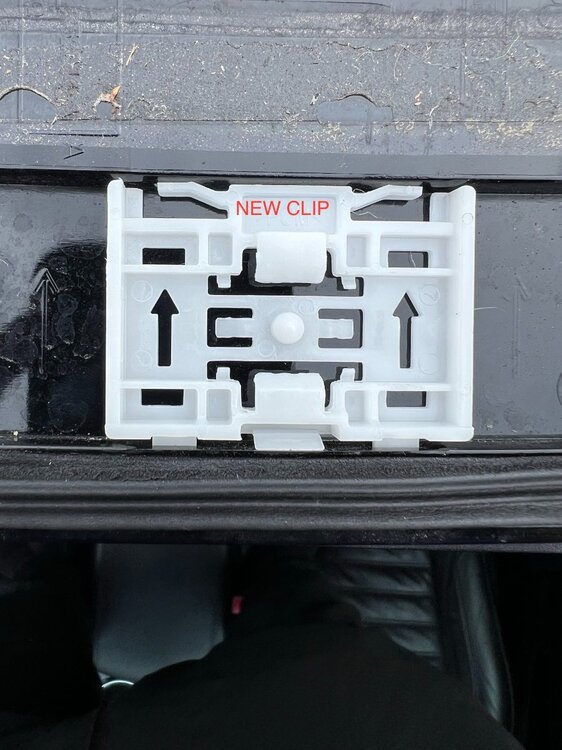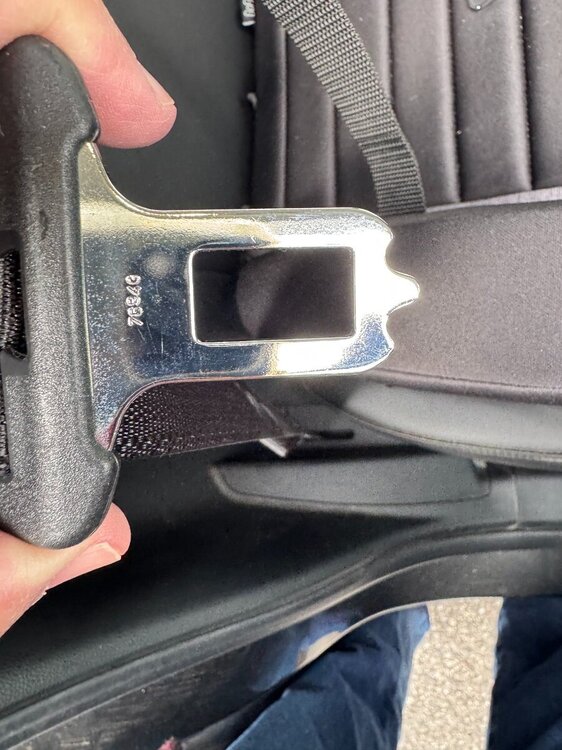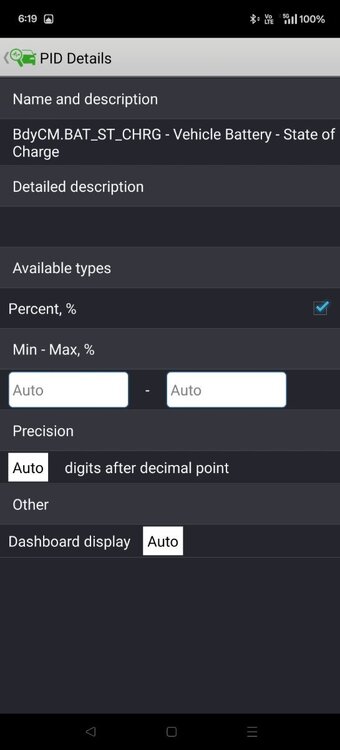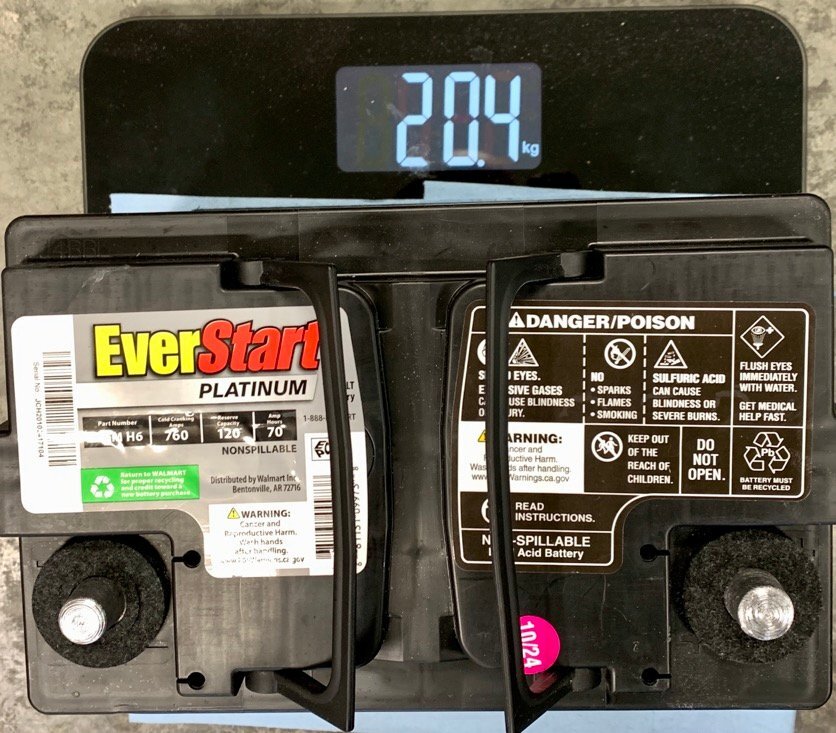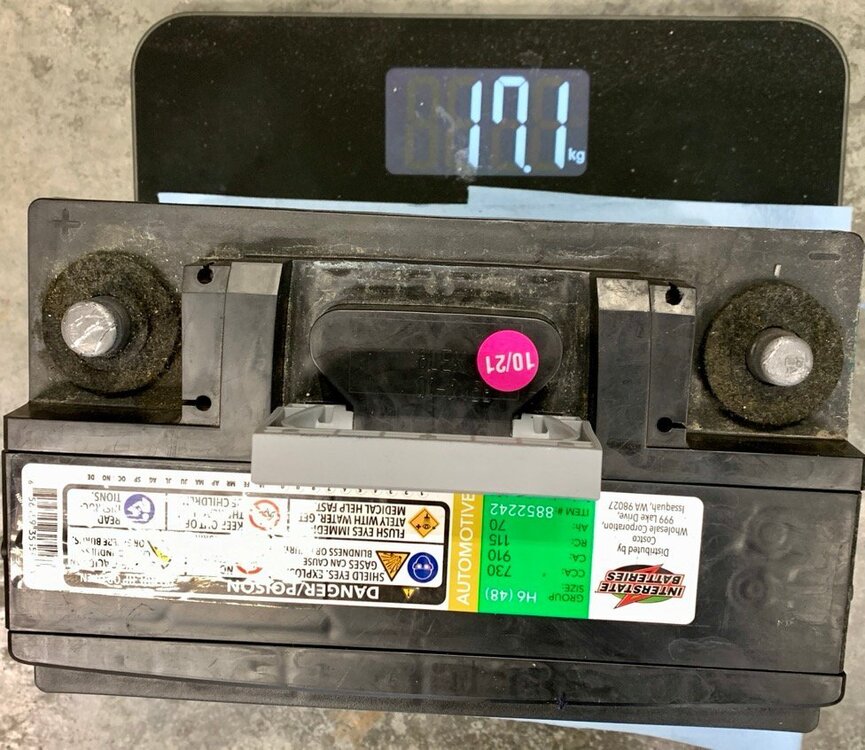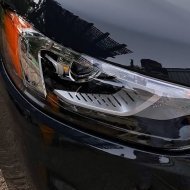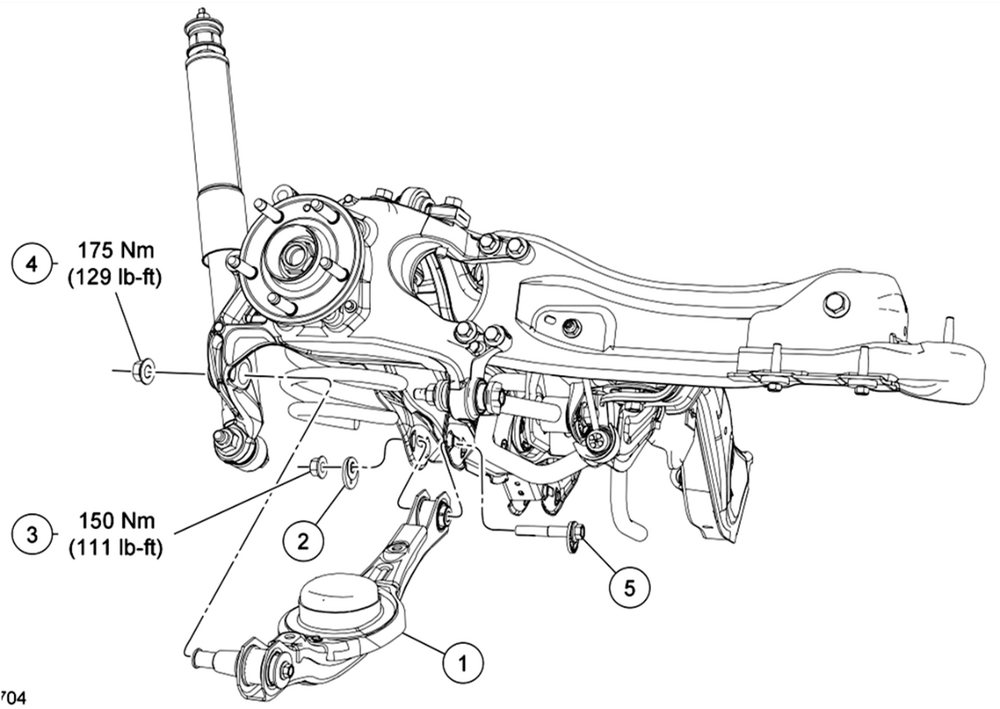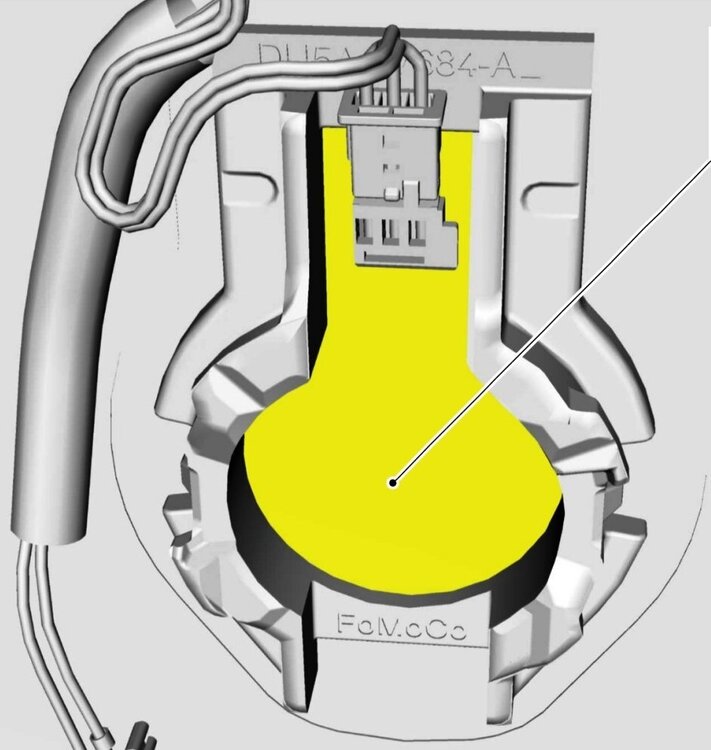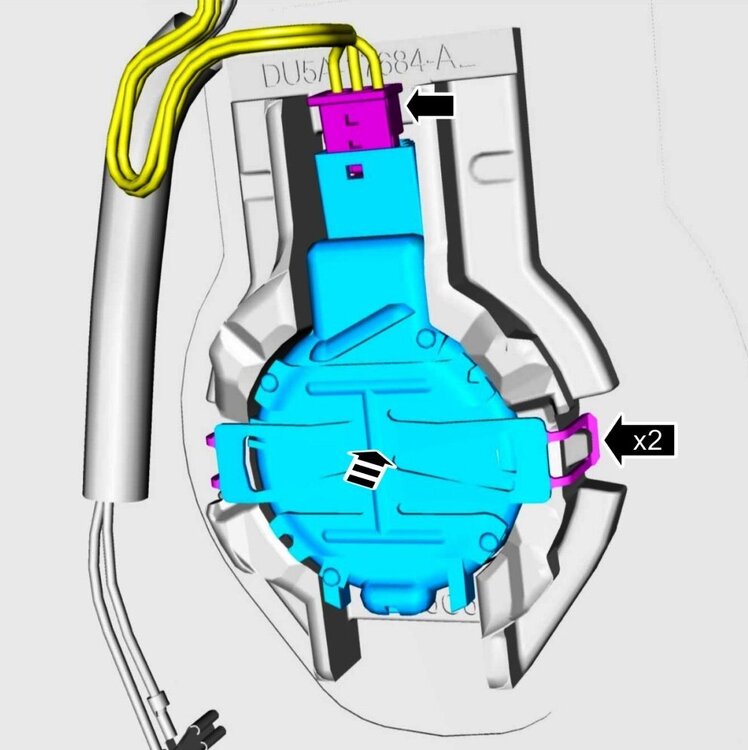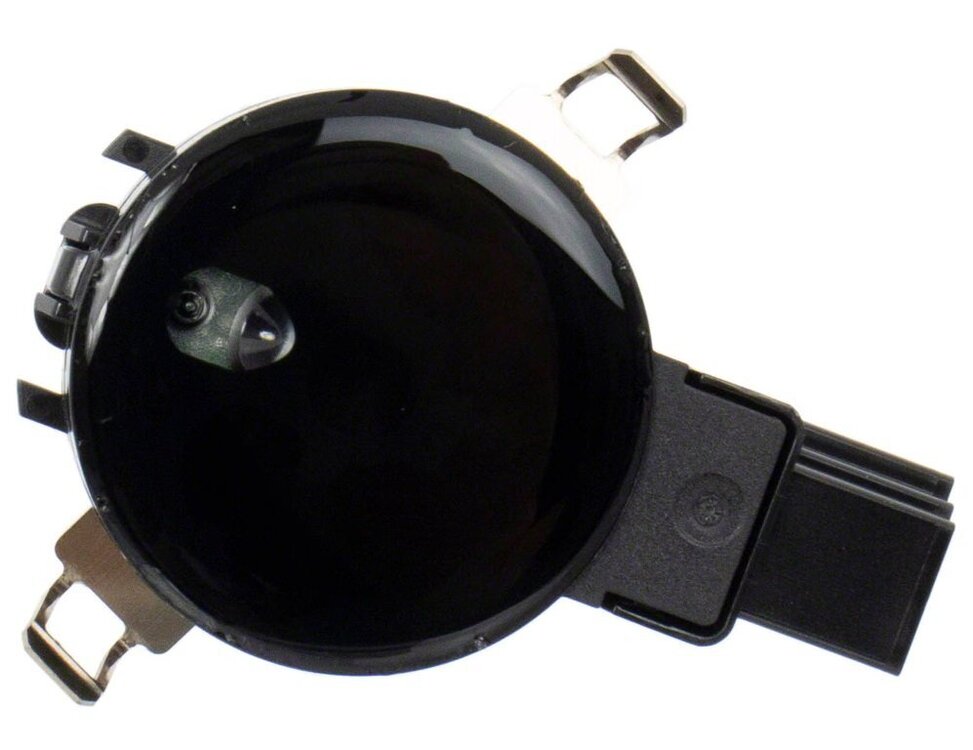Leaderboard
Popular Content
Showing content with the highest reputation since 11/11/2024 in Posts
-
Not lot of detailed info on this; only a handful of threads here. The procedure was pretty simple but has gotchas and other things I didn't really care for. For example the torque on the PTU fill plug, you'll never get 33 ft/lbs on that. I stopped turning before I got to 28 ft/lb and noticed the plug was deeper than when I first took it out and stopped. There's also no way, as mentioned in another thread here, that you can completely remove the PTU cooler without removing the crossmember there. You can however, pull the cooler out far enough to drain the fluid. Make sure not to screw up the o-ring on the cooler though, or you will be dropping the crossmember. Those of you with just a plug here and no cooler don't have to worry about this as your plug comes right out. Here's the fill plug and PTU cooler with the stud/nut showing. When I opened the fill plug not even a dribble of fluid came out. I had to use a combo of 1/4" 8mm socket and 8mm flex head closed end ratchet on the nuts. Or you can drop the exhaust. I kept the 1-piece stud/nut and just reused them. The PTU cooler pops out easily, or as much as it can before hitting the subframe. The coolers metal rod elements extend the length of PTU basically. Here she is draining. You can see the o-ring - do not mess it up. Brake cleaner will be your exhausts best friend. I'd say I spilled an ounce or more other than what's in the container but I tried to measure what came out of it. In the sun. Didn't look too bad I thought for ~35k miles but idk. Reinstalled PTU cooler and cleaned everything up. Inserted the stud/nuts and torqued to 97 in/lb Here's what I use to fill up transmissions and differentials. Just a regular water vacuum pump you can get on Amazon for $10. Easy peasy no mess no pumping just press a button. I put as much oil as it would take until it started streaming out. Then I spun the tires several times by hand and waited a few more minutes before pumping more fluid in. When the stream stopped and turned into a drip I put the fill plug back on with some thread sealant. Like I said above I don't like how Ford says 33 ft/lbs on the fill plug - that's not happening at least on mine. All cleaned up and done. I'll check the level again in 100 miles or so. The fill plug is inserted further than it was from the factory at 28ft/lbs. Be careful with aluminum. And that's pretty much it. It should take about an hour if you have access to a lift. As with everyone else, I have no idea why Ford couldn't put a drain plug other than to purposely let PTU's eat themselves after the warranty period.7 points
-
Hello everyone, I’ve been following this thread with a lot of interest — great work from all of you digging into the 360 retrofit! I’ve been wanting to achieve a similar result, but I decided to take a different approach. I went with a third-party 360 AVM kit and set it up to integrate with the SYNC screen on my 2023 Ford Edge. There really isn’t anything compatible out of the box with the Edge, but I noticed the Edge and Ranger share similar hardware and modules. And notice I said similar — not the same. It’s been a long process — I’ve done tons of research and a fair amount of trial and error to figure out the video inputs, CANBUS integration, and DIP switch configurations needed to get everything displaying correctly with the factory screen and triggers. With this I do have dynamic guidelines, parking sensors, multiple views along with the top-down bird view. Also I did retain the factory camera and camera view, and I can jump between factory view and 360 kit view. It’s still a work in progress, but going this route gives me more flexibility compared to being locked into the OEM restrictions. I’ll share more updates as I continue refining the setup. Next steps will be to mount all the cameras7 points
-
6 points
-
The RDU saga - long post So I tackled the install of my “new” RDU last week – it took about 7-8 hours for the complete job – seemed too long for me – the problem was those T-50 torx bolts that hold the RDU to the front brackets – I got the drivers side loose and out easily, but the passenger side ones would not come loose – to the point that the spines in the bolt stripped out and ruined my bit – wound up just removing the entire bracket and using the air hammer and chisel to get those bolts out of the RDU – that accounts for at least an hour and a half The rest was pretty ordinary – just a lot of removing and installing bolts – one problem I encountered was the axle nut on the RR roughed up it’s threads while removing it – the edge of the nut was hammered in to lock it (I assume) – I could not see a way to release it from the threads so it flattened out the threads a bit – It went back on and torqued to specs but, if I ever have to remove it again I might need a new axle shaft - my Launch code tool coded the replacement RDU to the PCM So got it all back together and took it for a test drive – while the growling/grinding noise is gone, it clicked when turning from a stop – I disconnected the electrical connection on RDU and noise disappeared – so I’m figuring the clutch portion of the replacement RDU is defective..?? – I removed the clutch part of the replacement and it had gear oil in it – there is a seal between the two but it failed – I don’t know what the oil does to the clutch part but I’m pretty sure that’s what caused the clutch to fail To remove that seal with diff in car you have to basically destroy it – the seal on my original diff did not leak, but it to was looking rough from the removal process - I thought it a good idea to replace it and looked up the part number stamped on it – went to Ford and the one they had (same part number) was way to big – when they looked up the part number it showed the seal for the front of the clutch where it connects to drive shaft, not the seal between the diff and the clutch – they could not explain why they both have the same part number and that was that – I wound up rehabbing my original seal and reinstalling it I took the clutch portion off my original RDU and put it on the replacement RDU – removing that from the gear portion is pretty simple – the code for the clutch portion is etched into the unit (pic) – recoded my original clutch back into PCM I disassembled the gear portion of my original bad RDU – the gear set looked to be ok as did the left and right side output bearings – the growling was from the pinion bearings – these are double row ball bearings – the cage they are in is plastic – I’ve never seen that before – I don’t know what caused the bearing to fail (it was always lubricated) – it gouged up the race and balls pretty bad, so that’s where all the metal in my oil was from – I removed the race from the pinion gear with a puller – if you could find these bearings I think these units would be rebuildable – the L/R side bearings are a standard bearing (LM-501314) – the pinion ball bearings had no identity markings on them so I’m not sure if they can be obtained So the car is back on the road and the AWD seems to be operating normally – if that rehabbed seal does not leak I think it’s a good fix - total cost for this was around $500 – that includes new wheel bearings, axle shafts, the junkyard RDU, seals, and fluid – hopefully it lasts the rest of the car’s life – thanks to all for the input and advice – and I took the above advice and did not drill a drain into the RDU – I’ll change as much of the oil as I can every 20K miles or so and hope it holds6 points
-
The little things matter 😉 Added glove box compartment light back in the Edge. Don't know why Ford deleted it in the first place. Scored a 2017 Edge glove box lamp harness and damper from the junkyard. With a little bit of DIY (dremel action & soldering), swapped out the LED PCB for a brighter aftermarket one. I made a T-harness to tap into the passenger side (visor) vanity mirror lamp circuit. Ran that down the psngr side A-pillar all the way to the glove box.5 points
-
alright, so its lane changing, never had awd so i kept looking at awd symptoms and solutions, i found it turned it off will drive tomorrow to see what happens technology is killing/saving me if you ever need help with a 73-79 f100 let me know, simplicity is awesome thanks for the help could not have done it without your insight5 points
-
5 points
-
Welcome to the Forum @Kellmac! The 2020 Edge Workshop Manual indicates the Rear Door Moulding panel is retained to the body by eleven (11) clips attached to the panel's molded-in pedestals. You might try putting a square of masking tape or low-tack painter's tape on the outer face of the panel corresponding to each of the eleven pedestals, to ensure that you are directly engaging each and every retaining clip. If any of your Edge's clips appear to be damaged when compared to the below photo, replacement clips are available per Ford's online parts-selling site, and through your local dealer's Parts Department. And finally, the 2020 Edge Workshop Manual removal & installation procedure is attached below as a PDF document. Good luck! Link to this FordParts webpage Rear Door Moulding - Removal and Installation - 2020 Edge Workshop Manual.pdf5 points
-
I wasn't happy with the light in the trunk at all. If the light isn't blocked, then everything is fine. But when it's blocked, it's hard to find anything. The lampshade is inserted into a frame made of textolite. I disassembled the right side of the interior to lower the ceiling. We connect to the rear right light. We place the lantern in the middle, carefully cut it out and insert it. We get the final result.4 points
-
4 points
-
I wanted to provide some closure on my whine/roar. After spraying the center bushing with lubricant and the whine/roar going away, I pulled the trigger and ordered a new center bushing. I used ramps on the passenger side to have the length of the vehicle up. I had to drop the exhaust, prior to cat (had to grind off the bolts), I then jacked up the front driver side to get the wheel enough off the ground so I could turn the driveshaft. I did put the transmission in Neutral, with the parking brake on and the rear driver wheel chalked. I removed the bolts holding the shaft on. The ends were "stuck". I sprayed with penetration fluid. I used some force, and mistakenly pulled the dust housing off the rear (very bad move on my part). I finally had to use a chisel and tap it out. The front came out with no issues. No matter the videos I watched. the amount of force I applied or the penetration fluid I applied, the shaft was NOT separating. After looking more at the rear of the shaft, I realized that by pulling off the dust cover, it was going to be an issue if I was able to get it back together. I had to order a new driveshaft. In the meantime, we drove the car for 2 weeks without a drive shaft with zero issues. No check engine lights nor performance issues that I could tell. I installed the new driveshaft, with the new center bushing and it's back to normal. No whine at all. At the end of the day, l spent a lot of time on my back and learned some lessons, but I think I still made out spending less than going to the dealer. I hope this helps someone.4 points
-
While the tips are in shadows, they look to be burning correctly, the tips worn round, and the end of the ground strap eroded, so certainly time to get it done. I did mine earlier just to get it done during a good time to work, between long drives, weather cooperating, etc. I did mine at 82k, a little erosion on the ground strap, but the precious metal tip was still square, could have gone much much longer, but for how cheap it was to do, if I pull them I replace them.4 points
-
Also, as far as I know, the oil life monitor also takes into account time with the maximum time being 12 months. So if you change the oil as suggested above at 50%, you would be more certainly changing the oil at no more than 5,000 mile or 6 months from when it was last reset. Or you can interpolate the interval you want, knowing that 100% means 10k miles or 12 months. For example, 60% oil life balance would mean 4k miles or 4.8 months.4 points
-
Welcome to the Forum @Jetboy47! The following is the Workshop Manual removal and installation procedure, which is also attached below as a PDF file... Driver Side Register Special Tool(s) / General Equipment Interior Trim Remover Removal Release the clips and remove the LH instrument panel finish panel. Use the General Equipment: Interior Trim Remover Release the clips and remove the driver side register assembly. Installation To install, reverse the removal procedure. Ford's online parts-selling site provides photos showing fuller detail of the retaining clips... Link to this FordParts webpage Good luck! Driver Side Register - Removal and Installation - 2022-2024 Edge Workshop Manual.pdf4 points
-
I did the larger rotor swap a few months ago. The brackets were readily available on Rock Auto to use the standard non ST calipers. I felt that the ST calipers would be too much change for a vehicle that has Adaptive Cruise with Stop and Go. The master cylinder even for the AWD rotors versus FWD is different, a lot more things are different for the ST and ST PP brakes. I also didn't go with drilled/slotted since this is both our daily driver and our vacation vehicle. I have around 6,000 miles on the new brakes and all is wearing well, all advanced braking things like stop and go adaptive cruise, ABS, etc work, and they have been hammered on and no fade in the mountains as before. Make sure you have a large enough spare for the front, or know you will be putting the spare on the rear if you get a flat in the front. I found a relatively cheap 18 inch spare from an MKX.4 points
-
The closed-spoke steering wheels contain the motor for Adaptive Steering, as described in the 2019 Edge Workshop Manual... Adaptive Steering - Overview The adaptive steering system provides steering assist to the driver by dynamically changing the steering ratio between the steering wheel and the road wheels, thereby reducing the number of steering wheel turns required to turn the road wheels. This is accomplished through the use of a motor, worm gear and toothed hub. All adaptive steering system components are inside the steering wheel, behind the driver air bag. Additional technical detail on Adaptive Steering, from the Workshop Manual... Placing your device cursor over underlined acronyms may yield full-words descriptions of the acronyms. Adaptive Steering - System Operation and Component Description System Operation System Diagram Network Input Message Chart SECM Network Input Messages Broadcast Message Originating Module Message Purpose ABS active ABS module Used to inform the SECM an ABS event is taking place. Active front steering request ABS module Used to request steering angle changes for stability control events. EPAS fail PSCM Used to inform the SECM of an EPAS or PSCM failure. Lane keeping system status IPMA Informs the SECM of the current lane keeping system status. Odometer master value IPC This message is sent to the GWM and then to the SECM . Provides the SECM with the current odometer value in kilometers. Power pack status PCM This message is sent to the GWM and then to the SECM . Used to inform the SECM of powertrain status; OFF-torque not available, ON-torque not available, Start in Progress-torque not available, ON-torque available. Restraint impact event status RCM Informs the SECM of airbag deployment and fuel system cutoff due to a vehicle impact event. Stability control event in progress ABS module Used to inform the SECM a stability control event is taking place. Steering wheel angle ABS module Provides the SECM with steering wheel angle information for clear vision compensation. Steering wheel heat request IPC This message is sent to the GWM and then to the SECM . Informs the SECM the driver has requested the heated steering wheel to be activated. Transport mode BCM This message is sent to the GWM and then to the SECM . Used to confirm the vehicle is in normal operation mode, factory mode or transport mode. Turn signal status SCCM Informs the SECM of the current turn signal status; LEFT, RIGHT or OFF. Vehicle braking command ABS module Used to inform the SECM of vehicle braking. Vehicle configuration information BCM This message is sent to the GWM and then to the SECM . Provides the SECM with the current vehicle configuration (central car configuration). Vehicle speed PCM This message is sent to the GWM and then to the SECM . Used to inform the SECM of the current vehicle speed. Vehicle yaw data ABS module Provides the SECM with vehicle yaw data for clear vision compensation. Adaptive Steering System The SECM controls the functions of the adaptive steering system and communicates with other modules through the SASM over the HS-CAN2 . The SECM and the SASM communicate over a private CAN . To activate, the SECM requires battery voltage, ignition voltage and must communicate with other modules over the HS-CAN2 . The SECM must also receive the power pack status message from the PCM in order to activate. The SECM uses a motor to turn a toothed hub connected to the steering shaft to add or subtract incremental turns to the driver steering shaft input. At low speeds the same steering input from the driver delivers more front wheel angle, providing more low-speed agility. Low speed maneuvers require significantly less steering wheel rotation. At high speeds, straight line driving precision is increased, providing the driver with an improved highway driving experience and feel during moderate-to-high-speed cornering. As the driver turns the steering wheel, the SASM detects the speed and direction of the steering wheel rotation and transmits this information to the SECM over a private CAN . The SECM responds by activating the motor in the appropriate direction and speed to assist in turning the front wheels and reducing the necessary number of steering wheel turns required by the driver. The SECM is self-monitoring and is capable of setting and storing Diagnostic Trouble Codes (DTCs). Depending on the nature of the DTC , the SECM may engage the adaptive steering lock and may send a request to the IPC to illuminate the adaptive steering system warning indicator and display a message in the message center alerting the driver of a potential adaptive steering system concern. The warning message is sent over the HS-CAN2 to the GWM where it is converted to a HS-CAN3 message and forwarded on to the IPC over the HS-CAN3 . Adaptive Steering Lock The adaptive steering system is designed with a locking device. While the lock is engaged, the steering system is set to a fixed (1:1) steering ratio. A sound may be heard when the vehicle is started or shut off as the lock is disengaged or engaged and a slight movement of the steering wheel may be noticed while the locking action is taking place. If the vehicle loses electrical power or the SECM detects a fault while driving, the lock is engaged. Extreme operating conditions may also cause the SECM to engage the lock. This strategy prevents overheating and permanent damage to the adaptive steering system. Typical steering and driving maneuvers allow the system to cool and return to normal operation. While the lock is engaged, it is possible the steering wheel may not be straight when the vehicle is driving straight ahead and the driver may notice the steering wheel angle or "clear vision" may be off-set. The locking solenoid also engages when the ignition is set to ON and the driver door is closed, this prevents the steering wheel from turning unnecessarily while the system is off and affecting steering wheel clear vision. The locking solenoid disengages once the engine is started. Heated Steering Wheel The SECM is also the controlling ECU for the heated steering wheel system. For additional information on heated steering wheel functionality, Refer to: Steering Wheel and Column Electrical Components - System Operation and Component Description (211-05 Steering Wheel and Column Electrical Components, Description and Operation). Component Description Adaptive Steering Locking Solenoid The locking solenoid is a normally engaged (locked) solenoid which requires a voltage input to disengage (unlock). This provides a fail-safe in case of SECM or adaptive steering system failure. Adaptive Steering Motor The adaptive steering motor is a reversible, variable speed motor with an attached worm gear. The motor is internal to the steering wheel and is serviced with the steering wheel. SECM The SECM is the ECU for the adaptive steering system. The module monitors all sensor inputs and HS-CAN2 messages relating to the adaptive steering system and directly controls the output of the adaptive steering motor. The SECM is internal to the steering wheel and is serviced with the steering wheel. Conventional Edge steering wheel... Good luck!4 points
-
And i bought it-a white SEL with a few options-cold weather package/trailer towing package/activex seats. Guess it will have to do-replacing a 2019 SEL with same options but with Nav and convenience package.4 points
-
I think I found an easier solution to this issue. I was able to slide a screw driver under the clip and rotate it a little to lift it up. I then slid a thick piece of felt under the end of the clip and dropped it back down. I purchased a pack of those round stick-on felt pads that go on the bottom of kitchen chair legs from the Dollar Tree. The one I used was the size of a nickel. The very annoying tick is completely gone!!!!:) I had to redo this felt pad solution because it eventually compressed too much and the rattle came back. I ended up using a round piece of plastic about the size and thickness of a nickel with felt stuck to both sides. Just sticking felt to both sides of an actual nickel would also work well.4 points
-
4 points
-
4 points
-
SSM 53601 2020-2023 Explorer/Aviator, 2020-2025 Police Interceptor Utility, 2020-2025 Escape/Corsair, 2022-2025 Maverick, 2024-2025 Nautilus - Hybrid - Illuminated MIL With DTC P2450:00 Stored In The PCM Some 2020-2023 Explorer/Aviator, 2020-2025 Police Interceptor Utility, 2020-2025 Escape/Corsair, 2022-2025 Maverick, and 2024-2025 Nautilus vehicles equipped with a hybrid powertrain may exhibit an illuminated malfunction indicator lamp (MIL) with diagnostic trouble code (DTC) P2450:00 stored in the powertrain control module (PCM). This may be due to an evaporative emission system concern or may also be caused by the customer overfilling the fuel tank. If this condition occurs, perform normal diagnosis per Workshop Manual (WSM) Section, 303-13 and repair as necessary. Inform the customer that the condition may have been caused by overfilling of the fuel tank and to not top-off the fuel tank when the fuel pump nozzle automatically shuts off for the first time. Refer the customer to the Fuel and Refueling section of their Owner Manual for additional information.4 points
-
Back again after a different dealership having my Edge for just about a month. I THINK we have figured out the problem. I will paste the (quite long) write-up from the master mechanic - as it would be more helpful than anything I would try to explain. Hopefully it helps at least ONE person that may be experiencing a similar problem. 2020 Ford Edge ST with 17k miles on it, 100 visits to dealerships, ridiculous amounts of time without the car, $1000's wasted, "fixes" that ended up not being fixes, etc. The master mechanic found it to be the driveshaft installed improperly from the factory. Please read the write-up for more details. I appreciate all the messages with guesses at what this could be. After getting a new transmission and it essentially being a placebo-fix where we weren't hearing the noise for a short period, here is to hoping that this new, properly installed driveshaft resolves this FIVE YEAR problem we've been experiencing. Thanks again!4 points
-
4 points
-
4 points
-
Hi all, I was able to complete the repair successfully! It wasn't the hardest repair I have ever done, but it also wasn't the easiest. If you take a plastic trim removal piece, the little white clips are very easy to pop off. The problem I faced when doing this repair was, as the manual stated, some come with little dollops of polyurethane in the corners, and my car was one of the ones that had this. It is a very tight spot to get a razor blade in there. I am, unfortunately, at college, so I have very limited access to tools, but I would recommend a spackle knife to get in there and to pull that polyurethane out. This is a very tedious process and takes a good amount of time. Once that was finished, the whole trim piece popped off, allowing me to access the underside to install all of the clips. I got new clips from a Ford dealership, and I noticed a little upgrade was made to them. There is a little white piece that applies pressure to ensure that the clips don't fall out, like how mine fell out. You can notice the difference in the picture below. Once the clips were installed, some of the weather stripping came undone so I purchased new weather stripping at Home Depot and installed it. To reinstall the trim piece, you can simply line up the holes with the clips you installed on the trim piece and then apply some pressure; you will hear loud clicks for every clip you have. You must insert the clips into the trim piece, you can't put the clips onto the frame of the car. During this whole process, I got a little impatient undoing the polyurethane and snapped the trim piece in 2 places. I was able to silicone the pieces back together, it's not very noticeable, but I would recommend taking your time to not let this happen to you. Down below I have numerous photos of the whole process, let me know if anyone needs help. Again, thank you everyone for your help, you made this process a whole lot better for me! B7707F98-D065-4C9B-9911-2698517FCE65_1_201_a.heic4 points
-
I have finally solved the issue of the rear seat belt extenders for my 2020 Ford Edge Titanium. We have child booster seats for our two granddaughters and it was very difficult to secure the seatbelts because of how low the receptacles are set in the rear seat. With the 60/40 split fold down rear seat, there are two completely different seat belt connectors. One for the seat on the passenger side and one for the seat in the middle and driver's side. The seat on the passenger side has a unique buckle arrangement and requires the following extender (KT4Z-78611C22-AA). The seat on the drivers side (and middle seat) has a normal buckle and uses the following extender (6L2Z-78611C22-AA). Once I got both of these and made sure they worked, I tried to explain this to the parts person at the local Ford dealership. They were uninterested. Please note that both of these are available free of charge from Ford, although they may have to be ordered. The passenger side extender is the more difficult one to obtain.4 points
-
Good luck! 360 Camera - Wiring Diagram 2 - 2024 Edge - China.pdf 360 Camera - Wiring Diagram 1 - 2024 Edge - China.pdf Parking Aid - Component Location - Description and Operation - 2024 Edge Workshop Manual - China.pdf Side Parking Aid Camera - Removal and Installation - 2024 Edge Workshop Manual - China.pdf4 points
-
A few updates to the cruise control project: 1. I have not replaced the lower front bumper cover trim to one that protects the cruise control module. So far, no damage or sensor blockage has occurred. I was able to use adaptive cruise control in the rain. I did not notice any snow or dirt accumulate on the sensor. 2. The ABS module will need to be replaced for lane centering, evasive steering assist, and ACC to 0 mph. I have received an ABS module. Currently, FORScan does not have any ABS service functions for the 2021-2024 Edge. However, the FORScan Team has sent me a test build, so I should be able to calibrate the ABS module and bleed the brakes. Hopefully I will be able to find time to replace the ABS module and bleed the brakes soon. 3. A little while ago, my ACC and pre collision assist stopped working. The cause of this problem was a poor connection (done by me lol). The CCM was only getting about 8 volts of power. The solution to this was to fix my bad wiring and ensure the CCM communication wires are a twisted pair.4 points
-
It is in the very back of the area where the roof opens on the right (passenger) side. There is a silver metal clip, almost hook shaped, that goes over a metal thin rod that goes from the left to right side of the vehicle in the back. It is very hard to see. You have to push the left side of your head against the glass (with the sunscreen cover all the way open of course) and look towards that back passenger side corner. I got one of those very small eyeglass screwdrivers and put a thin piece of cloth about 1/2 inch square over the end of the screwdriver and pushed it between the silver metal springlike hook that goes over the bar and the rattle/ticking is gone! I have had mine work its way out a few times and had to push it back in.4 points
-
Good luck! Parking Aid - 360 Degree View Camera Alignment - 2020 Nautilus Workshop Manual.pdf Parking Aid - 360 Degree Camera - 2020 Nautilus Owner's Manual.pdf Parking Aid - 180 Degree Camera - 2022 Edge Owner's Manual.pdf4 points
-
@Wubster100: Relevant information from 2020 Nautilus and 2022-2024 Edge Owner's Manuals, Workshop Manuals, and Wiring Resources, is attached as PDF documents below and in an immediately following post, due to Forum file attachment limitations... Touchscreen WITH Front Split View Camera - APIM & IPMB Wiring Diagram - 2022-2024 Edge.pdf Rear View Camera - Touchscreen WITHOUT Front Split View Camera - Wiring Diagram - 2022-2024 Edge.pdf APIM Module Communications - Wiring Diagram #1 - 2022-2024 Edge.pdf APIM Module Communications - Wiring Diagram #2 - 2022-2024 Edge.pdf APIM & IPMB Grounds - Wiring Diagram - 2022-2024 Edge.pdf APIM Power Distribution - Wiring Diagram - 2022-2024 Edge.pdf SYNC MODULE (APIM) - Connector C2383A Pinout - 2022-2024 Edge.pdf SYNC MODULE (APIM) - Connector C2383F Pinout - 2022-2024 Edge.pdf IMAGE PROCESSING MODULE B (IPMB) - Connector C3676A Pinout - 2022-2024 Edge.pdf IMAGE PROCESSING MODULE B (IPMB) - Connector C3676B Pinout - 2022-2024 Edge.pdf IMAGE PROCESSING MODULE B (IPMB) Module Communications - Wiring Diagram - 2022-2024 Edge.pdf Rear View Camera - Touchscreen WITH Front Split View Camera - IPMB Wiring Diagram - 2022-2024 Edge.pdf Front Split View Camera - Power Distribution & IPMB Wiring Diagram - 2022-2024 Edge.pdf AUDIO CONTROL PANEL (Front Camera Switch) - Connector C2009 Pinout - 2022-2024 Edge.pdf AUDIO CONTROL PANEL (Front Camera Switch) - APIM & HVAC Wiring Diagram - 2022-2024 Edge.pdf HVAC MODULE - Connector C228B Pinout - 2022-2024 Edge.pdf Parking Aid - Overview - 2022-2024 Edge Workshop Manual.pdf Parking Aid - Component Location - 2022-2024 Edge Workshop Manual.pdf Parking Aid - System Operation and Component Description - 2022-2024 Edge Workshop Manual.pdf Parking Aid - 360 Degree View Camera Alignment - 2022-2024 Edge Workshop Manual.pdf Image Processing Module B (IPMB) - Removal and Installation - 2022-2024 Edge Workshop Manual.pdf 360 Camera - Wiring Diagram #1 - 2020 Nautilus.pdf 360 Camera - Wiring Diagram #2 - 2020 Nautilus.pdf 360 Camera - Wiring Diagram #3 - 2020 Nautilus.pdf 360 Camera - Wiring Diagram #4 - 2020 Nautilus.pdf IMAGE PROCESSING MODULE B (IPMB) - Connector C3676B Pinout - 2020 Nautilus.pdf IMAGE PROCESSING MODULE B (IPMB) - Connector C3676A Pinout - 2020 Nautilus.pdf EXTERIOR MIRROR LH - Connector C517 Pinout - 2020 Nautilus.pdf EXTERIOR MIRROR RH - Connector C615 Pinout - 2020 Nautilus.pdf Parking Aid - Component Location - 2020 Nautilus Workshop Manual.pdf Parking Aid - Overview - 2020 Nautilus Workshop Manual.pdf Parking Aid - System Operation and Component Description - 2020 Nautilus Workshop Manual.pdf Side Parking Aid Camera - Removal and Installation - 2020 Nautilus Workshop Manual.pdf4 points
-
The Edge, the model sold by the car company "Ford Motor Company". At least since 2011 Ford has used this strategy, the main benefit is to reduce fuel consumption by reducing load from the alternator when charging is not required. This can even be seen by monitoring the voltage output of the alternator. I am using ForScan lite (Android). The PID is "BdyCM.BAT_ST_CHRG", see screenshot attached. As for AGM selection, seeing how I probably was wrong before, I wouldn't follow the F150 sheet. However, since an Edge with auto-start stop does have an AGM from the factory, maybe use the ABD from that? Checking VINs of Edges online, a 2016 Edge SE FWD that has Auto-Start stop has "01" in the battery type. So does a 2023 Edge ST that has Auto-Start stop. (As per the the F150 sheet this correspondences to BAGM-48H6-760 70Ah 760CCA, which is the stock Edge battery with Auto-Start stop).4 points
-
Thanks @omar302 This morning when I connected my laptop to change the battery config as you suggested above, and it was taking me longer to get Forscan to communicate with the OBDLink MX+ and with that I got the battery low warning, and that's after it was on the tender overnight. Decided its time for a new one, so the quickest was to buy one from Walmart - I got the H6 AGM Platinum for $178.00 - it gets good reviews online. The Interstate H6 bought from Costco lasted 3 years and 1 month, just out of warranty. With the new battery installed I first changed the type as above and then did a BMS reset. Note that the new AGM is 3kg (6.6 lb) heavier than the previous one. I paid the $12 for a years subscription to Forscan - feel it well worth it and the developers most certainly deserve the support. .4 points
-
Today the windshield installer left my lights ON in Aux Power mode for ages to the point that it cut out - I then put my 2.5 Amps charger on it and a while later when he wanted to connect the Autel device to in Aux Power mode, this time with the lights and AC unit off, it still cut out quicker than it should, but of course it didn't have much time to charge since the first event. I started looking at a replacement and decided I'd go with an AGM H6 this time, but after getting it fully charged my battery tester says that its still 100% healthy so I'll hold off on the replacement for now. This is what I'll go with next time: ACDelco Gold Automotive AGM Batteries 88864541 $167.004 points
-
Thanks @Haz As I walked out to my driveway when the installer returned I found the metal clip that he was adamant wasn't installed - he apologized. We spent a long time on the phone with Autel and their response was that they've got to install a new windshield because the mirror/camera mounting must be wrong. I prompted that we repeat the calibration process using the Autel because I suspected that he did not follow the procedure correctly previously - after about 10 to 15 minutes on the road the fault on the dash cleared and the Autel said calibration completed successfully. See photo of the rain sensor clip installed.4 points
-
Happy Thanksgiving to all. As an update my dealer installed a new torque converter and had to go back to get belts tightened to reduce noise….. so far all is running better than new….. all covered o under the drivetrain warranty’s4 points
-
HAPPY THANKSGIVING AND A BIG THANK YOU to all who have posted in this thread. I was able to convince my Ford Service department that I did indeed have a transmission issue with my 2019 Edge SEL, 2L turbo. I searched this forum and finally found this thread. I have ALL the same conditions with my transmission. I even had the fluid changed ($500) with 79900 miles. At that time, there was no issue but wanted to maintain this vehicle for a long life. After the fluid was changed, during cold weather, I started having hard up and down shifts. I SHOULD HAVE RETURNED TO THE DEALER IMMEDIATELY. But the weather warmed up and the issue(s) disappeared. Now, at 89900 miles, the issue(s) have resurfaced and the weather is colder. I took it to a dealer after reading this forum. The service technician VERIFIED my concerns with the shifting issues. Fortunately, I had bought a non-Ford service contract and the $6000 cost will be paid in full!!!. I did have choices...The service contract that I had was with Route 66. I chose this company because it is thousands less than the Ford, Chrysler, or Zurich plans hawked by the dealer. This one I bought through the credit union. They have been great to work with and I even get money for a rental/loaner car. I did opt for a Ford Certified and rebuilt transmission rather than the "used" transmission that my plan covered. The additional $500 cost, to me, was worth it as I intend to keep this vehicle. The re manufactured transmission will be warranted to 2 years with UNLIMITED mileage. Since my service contract goes to 120K miles and into 2027, I figured it was (is) the best option. Again, THANKS to all who posted on this thread!!4 points
-
Ford has issued CSB 24B54 Supplement #1 to Dealers, with a revised date for Owner Letter mailing... ...increases the allowable Labor Time to conduct the Service Procedure... ...and revises the Service Procedure to improve the programming success rate. The updated Service Procedure with revised instructions shown in red text, formulated for dealership professional technicians using the Ford Diagnosis and Repair System (FDRS) to perform the software updates, is attached below as a PDF document... Owners who opt to perform the software updates on their own, will use the Over The Air (OTA) automatic download and installation method. In Canada, the only Supplement #1 difference is Canadian Owner Letters are expected to be mailed by mid-December 2024. CSP 24B54 Supplement #1 - Revised Service Procedure.pdf4 points
-
Heating/cooling for both front seats is regulated by Driver Side Front Seat Module (DSM) that you have pictured. Power to the DSM is protected by fuses F74 and F77, located beneath the underside cover of the Battery Junction Box. From the 2020 Edge Workshop Manual and Wiring Resource, attached below as PDF documents... Good luck! Climate Controlled Seats - Power Distribution - Wiring Diagram - 2020 Edge.pdf Climate Controlled Seats, Left Hand - Wiring Diagram - 2020 Edge.pdf Climate Controlled Seats, Right Hand - Wiring Diagram - 2020 Edge.pdf Driver Front Seat Module (DSM) Connectors Loctation Illustration - 2020 Edge.pdf Front Seats - System Operation and Component Description - 2020 Edge Workshop Manual.pdf Driver Front Seat Module (DSM) - Removal and Installation - 2020 Edge Workshop Manual.pdf Battery Junction Box (BJB) - Top View - 2020 Edge.pdf Battery Junction Box (BJB) - Bottom View - 2020 Edge.pdf Battery Junction Box (BJB) - Fuse-Circuits Listing #1 - 2020 Edge.pdf Battery Junction Box (BJB) - Fuse-Circuits Listing #2 - 2020 Edge.pdf4 points
-
4 points
-
Yeah, it sounds like the car thought something was in the path. I had someone start to pull into my lane (would have creamed the passenger side) and I didn't see them. Evasive steering applied brakes and moved me to the left. Saved me from being hit. Perhaps there was something that the sensors picked up. I always make sure my sensors are clean because I value the evasive steering feature.4 points
-
I don't think they are " one-time use " either but Ford is being cautious. It's like saying, on older cars, every time you change the oil you have to change the oil drain plug gasket. Not a true statement. It's very tight in there to remove that PTU cover plate without moving anything else. I chose to buy a MityVac unit specifically for vacuuming out the gear fluid. Sucked it almost dry. I used another MityVac unit, so I didn't have to clean them in-between same-time uses for the PTU, to pump the new gear oil in. Took the correct amount of fluid as specified in the manuals. ( That's why I said it sucked it dry ) And, of course, a lot less messier.3 points
-
Looking at that new drain plug I see that it allows a more controlled drain flow - you can partially turn it out until there's flow from the port while the threads are still engaged. Getting the small O-ring on the tip of the filter housing I take off the gloves and make sure everything is dry then push it down and over. .3 points
-
RDU: Motorcraft SAE 75W Disconnect RDU Fluid XY-75W-QL PTU: Motorcraft SAE 75W-85 Premium Synthetic Rear Axle Fluid XY-75W85-QL / WSS-M2C942-A ATF: Motorcraft MERCON ULV Automatic Transmission Fluid XT-12-QULV / WSS-M2C949-A / MERCON ULV3 points
-
You should pop off the cover like it says and check. My 2019 SEL has 5 pin wiring to the rear view mirror, I was able to find the male and female connectors and pins to make my own harness to get switched 12v from the rear view mirror. I wasn't willing to spend $42 on a Dongar adapter, or $150 like the one you posted.3 points
-
The last update I received on my 21MY Ford was Software Update 6.4.0 in February. I think the 21MY vehicles get updates last or whenever Ford feels like it. I don't know if you check other forums on vehicles with SYNC4 but it does seem like the 21s are last to be updated. Not much we can do stressing about updates, whenever we are blessed by Ford is when we will get updates3 points
-
Lower Arm illustration and guidance from the Workshop Manual... NOTICE: Suspension fasteners affect performance of vital components and systems and their failure may result in major service expense. If replacement is necessary install new parts with the same part numbers or equivalent part. Do not use a replacement part of lesser quality or substitute design. Tighten the fasteners to specification during reassembly. NOTICE: Tighten the suspension bushing fasteners with the weight of the vehicle resting on the wheels and tires or incorrect clamp load and bushing damage may occur. Good luck!3 points
-
Just received power up update 6.2.0 yesterday afternoon3 points
-
Technically I've owned this vehicle for 13 years, since I purchased it new in Nov of 2011, as a 2012 model year. I have been very happy with this Edge for all those years. She currently has 103,000 miles on her. Just had a safety inspection performed, along with oil change and tire rotation and air filter/cabin filter. Master Mechanic states nothing wrong with the chassis or suspension or steering or engine or transmission or brakes or electrical system. I've had one brake job, one set of tires, one battery, one spark plug change. one throttle body cleaning, one transmission oil change, one engine coolant change, new belts and idler pulley. I consider this as normal maintenance, as is the case with all ICE vehicles. A/C has not been serviced, and still blows cold. I did have a issue with the brake pedal going to the floor with loss of braking effort at around 60K miles. The dealership had the car for 5 weeks trying to figure out what was wrong. The Ford Dealership wound up changing the brake booster, master cylinder, ABS unit, ABS computer, and fluid twice. It was a $1600 bill, and I never really got a good answer as to what was wrong. The only other repair was a fuel filler tube (no traditional gas cap) replacement. The brake issue is the only major glitch we have had with the Edge. The body is solid, no rust or corrosion. Paint still shines like new. Interior and carpeting is in excellent condition. I still like my Edge, and I would buy another, but alas, this vehicle has been discontinued after 2024 MY. I've owned lots of Fords over the last 55 years, and this has been one of my favorite ones!3 points
-
Ford's online parts-selling site offers a zoomable-scrollable exploded view illustration that denotes (with a gold-square icon) the Rain Sensor Mount being provided in assembly (PIA) to the Windshield... Link to this FordParts webpage In your photo of the replacement windshield... ...the configuration and depth of the Rain Sensor Mount locator cavity appears consistent with this illustration from the 2017 Edge Workshop Manual... FordParts' photo of the Rain Sensor Module shows two integral spring clips... ...which this Workshop Manual illustration shows snapping over two ears or lugs that are cast into the sides of the Rain Sensor Mount... Good luck!3 points





